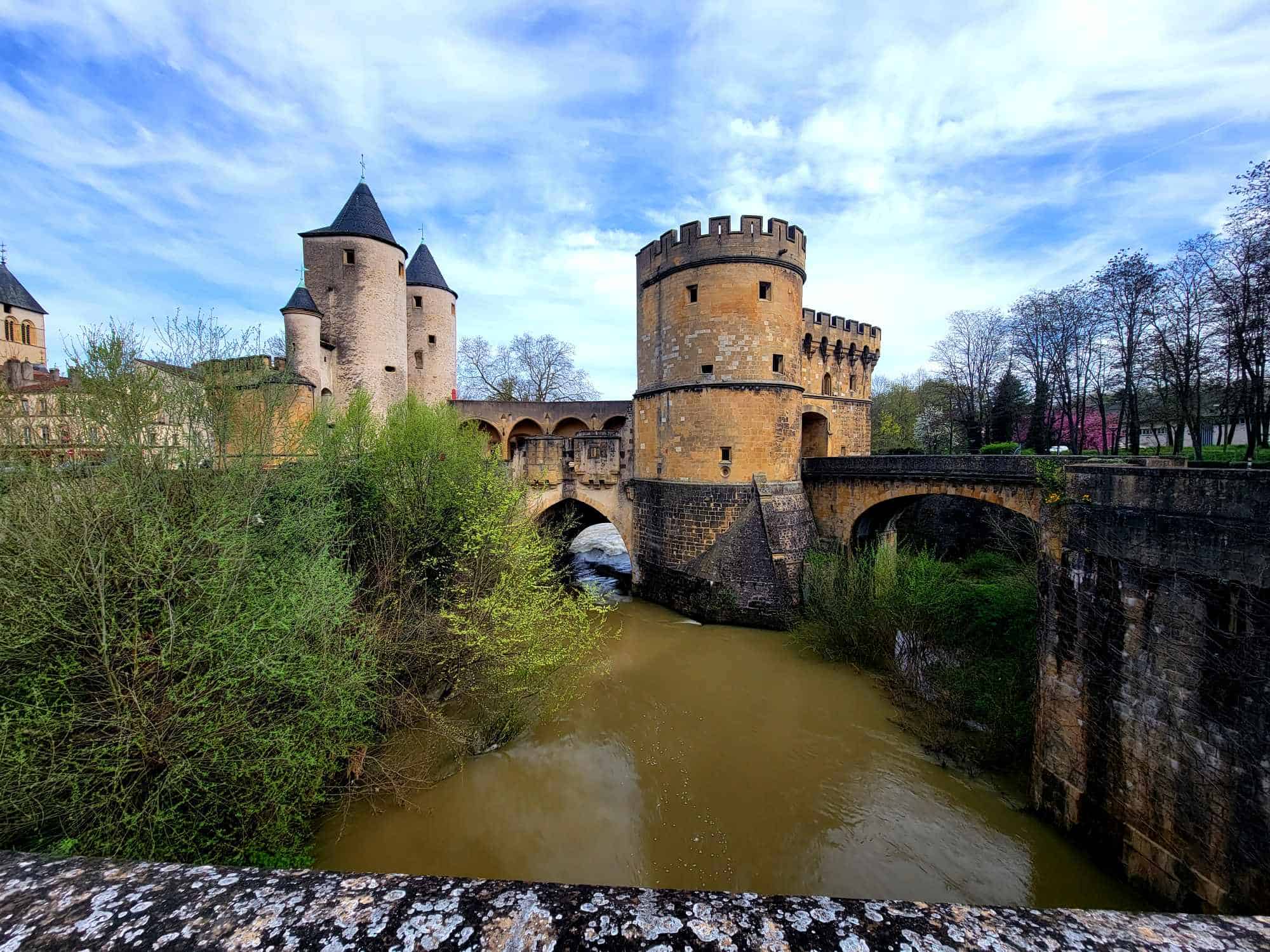Metz’ stunning architecture, amazing museums, and jaw-dropping gothic cathedral – free from throngs of tourists – make the city an absolute delight! It’s a way to really experience the best feeling of living in Europe without also feeling like you’re going to be stampeded, and it’s one of my favorite French cities.
And as for the pronunciation? It may seem pretty straight-forward, but the French got us again. It’s actually pronounced ‘Mess,’ not MeTs.
Metz History
Flanked on three sides by the Moselle and Seille Rivers, Metz has always held a strategic location with natural barriers, food and water sources, and fertile soil. Inhabited since the stone age, it was eventually home to Celts who built a hill fort there, but in 52 BC when Julius Caesar conquered Gaul, the city became part of the vast Roman Empire under the name Divodorum Médiomatricorum. It thrived for hundreds of years as an important Roman city.
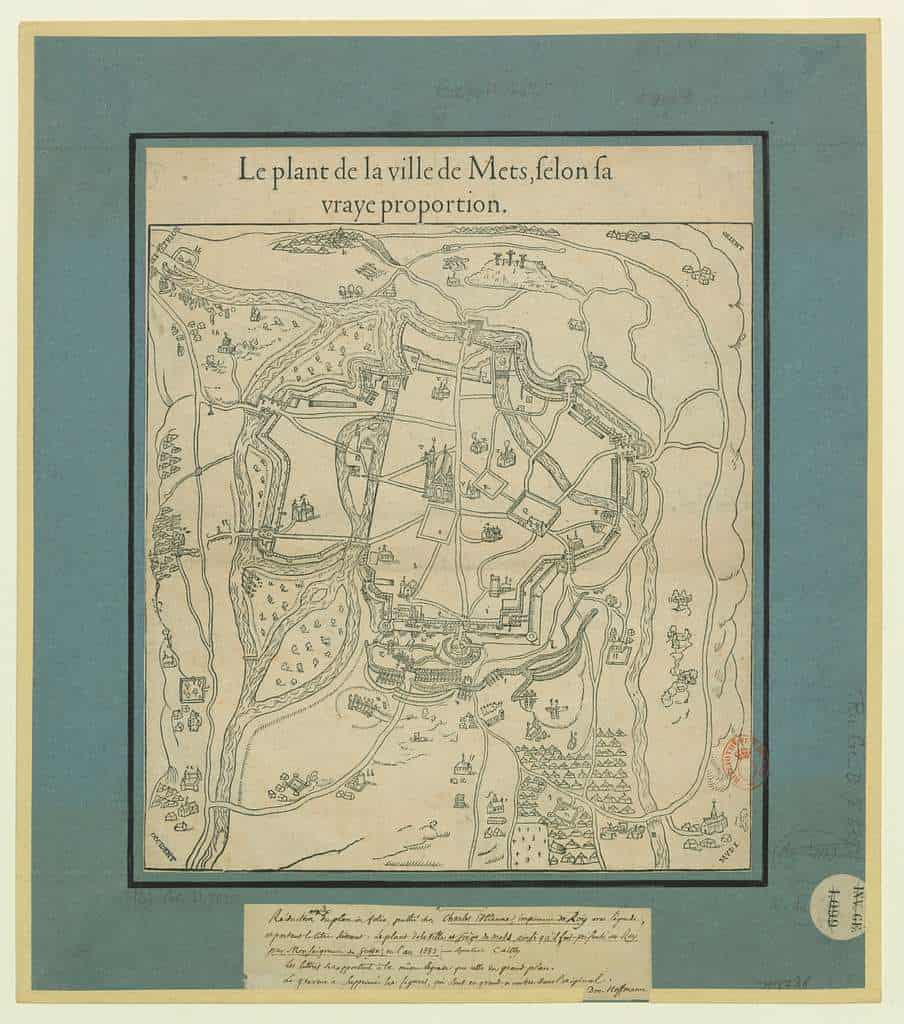
In more recent history, Metz was part of the German Empire after the end of the Franco-Prussian war in 1871. Metz remained German until World War I when it went back to France. Then in WWII, back it went to Nazi Germany. And finally in 1944, Patton’s Third Army liberated the city and it is now back in French hands.
Metz has had an undeniably colorful history, and much of the German architectural influence from the 19th century can still be seen. This, blended with a beautiful selection of Medieval buildings and some gorgeous Art Nouveau architecture, makes walking down the streets of Metz a visual delight.
Things to See in Metz
1. The Germans’ Gate (Pont des Allemands)
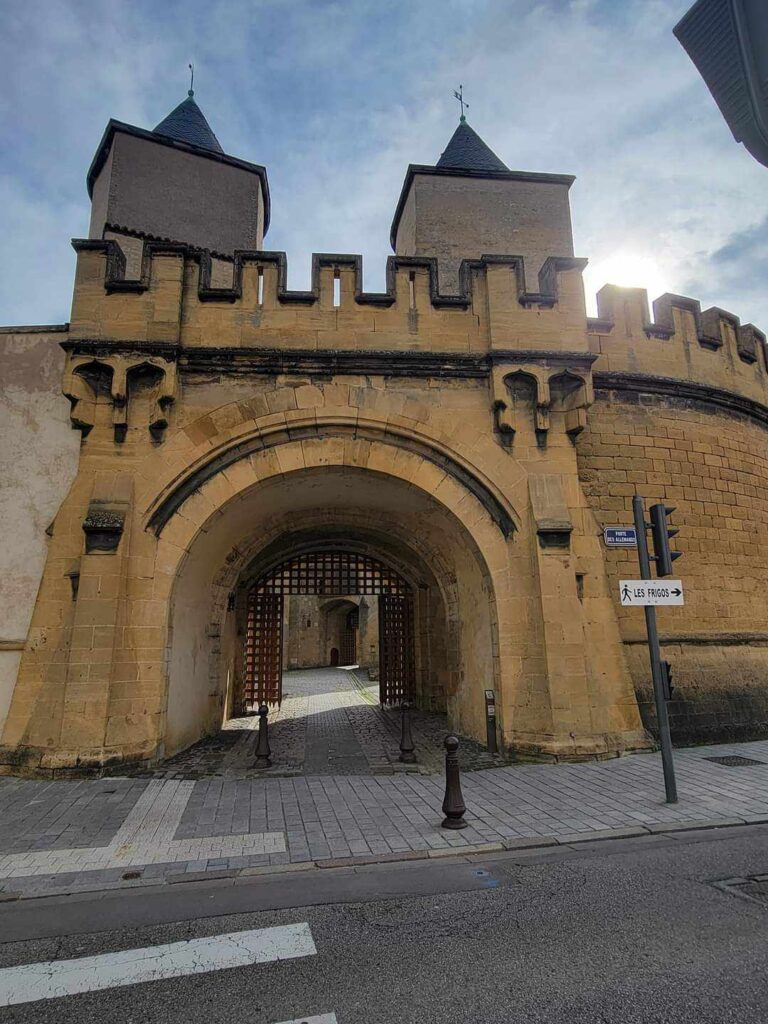
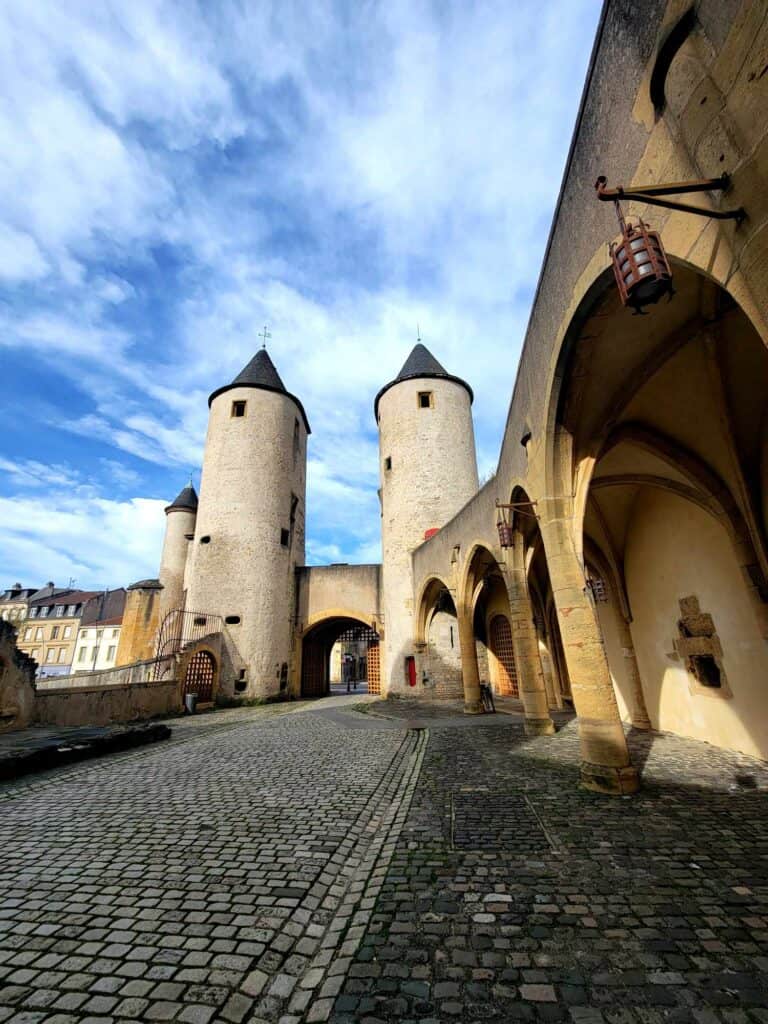
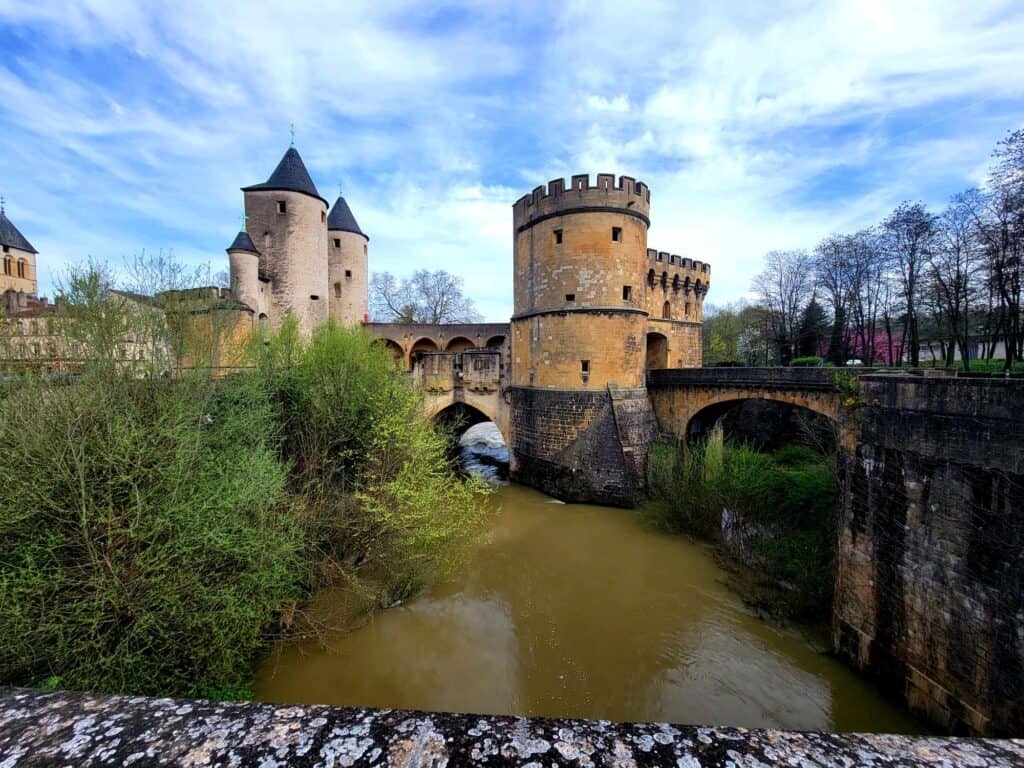
Porte des Allemands (Gate of the Germans) is named after the Teutonic Knights, hospitaller brothers of Notre Dame des Allemands, who founded a hospital close to that location in the 13th century. The gate and its buildings are part of the last major medieval fortifications remaining in Metz.
You can walk freely around the buildings and across the bridge that spans the Seillie River. It does have limited opening hours, but if you’re lucky you can enter one of the towers. There’s a little film at the beginning, and you can climb up and have a nice view of the remaining ramparts from the tower.
Admission, when open, is free.
2. Medieval Defensive Walls
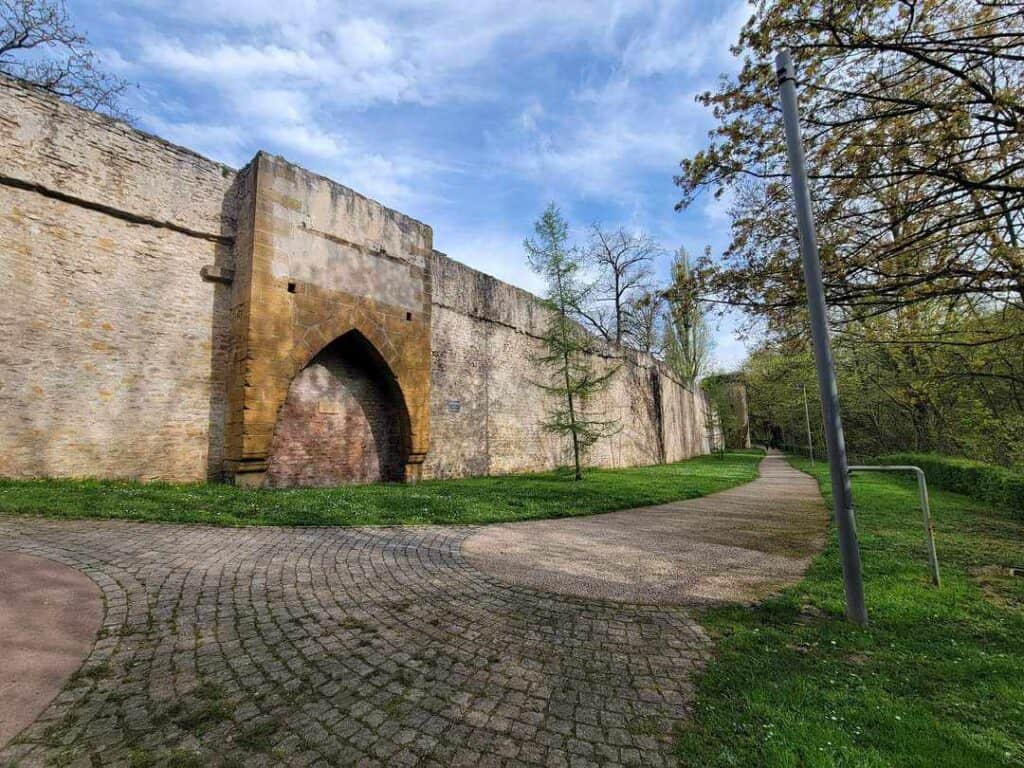
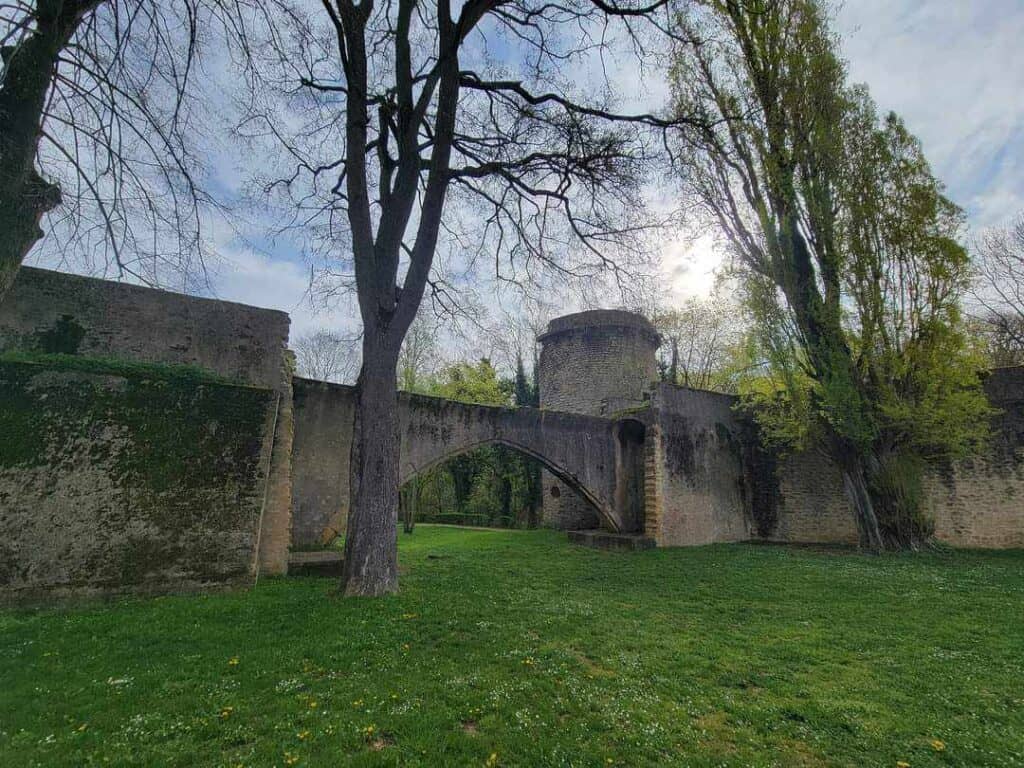
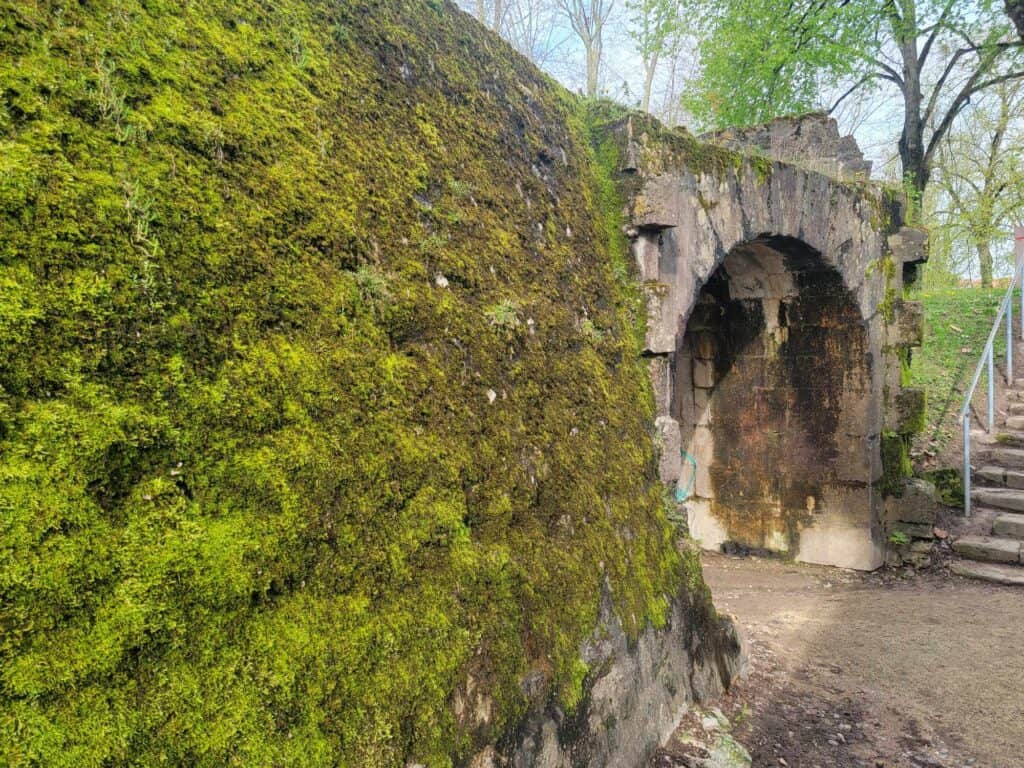
Portions of the original Medieval defensive walls of Metz are still standing tall, all along the banks of the Moselle and the Seille. You can begin the ramparts walk at the Porte des Allemands, and follow it down a lovely path along the river Seille.
Over 4 miles of walls were erected in the 13th century. Unfortunately much was destroyed in the 20th century to make way for urban expansion. *silently cries* But you can still have a beautiful walk along those that remain, and marvel at the surviving ramparts, and towers.
3. Fort Bellcroix/US Army Monument
During World War II, the Battle of Metz lasted for three months from September to December of 1944. Both the U.S. and Germany suffered a large but unknown number of casualties in the prolonged battle before the U.S. successfully drove the Germans out.
You can visit Parc Fort Bellcroix one of the places where the German forces held their defensive positions, and where a beautiful stone eagle monument marker pays gratitude to the US Army 95th Infantry Division under General George S. Patton who liberated the city and became known as “The Iron Men of Metz.”

The park is located on the other side of the Seille which you can access via the bridge right next to the Porte des Allemands. It’s about a 20 minute walk to the marker.
Patton died as the result of a car accident not long after the war, and he is buried in Luxembourg about an hour to the north. If you are interested in WWII history, it’s definitely worth the trip by car or train.
4. Metz Cathedral
Of all the things to see in Metz, this is a must-see. Construction on this incredible cathedral dedicated to Saint Etienne (Stephen) began in the early 1300s and was finally completed in the 1500s. Several changes and renovations have occurred over the centuries since then including an entire new copper roof to replace the roof that completely burned in 1877 after fireworks were launched off it to welcome Emporer Wilhelm I at his grand entry into the city.
The cathedral’s real claim to fame is that it houses the largest expanse of stained glass windows in the world, earning it the nickname God’s Lantern. Stunning and vibrant stained glass spans history from the incredible 14th century rose window of Hermann von Münster to 20th century marvels from Marc Chagall.
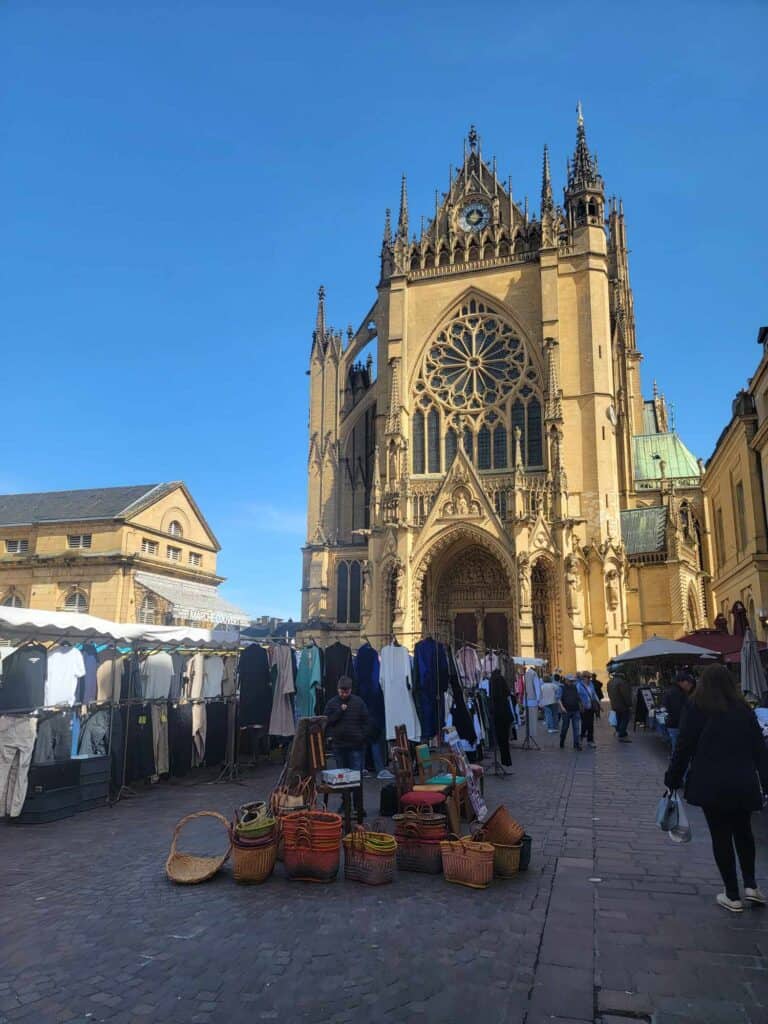
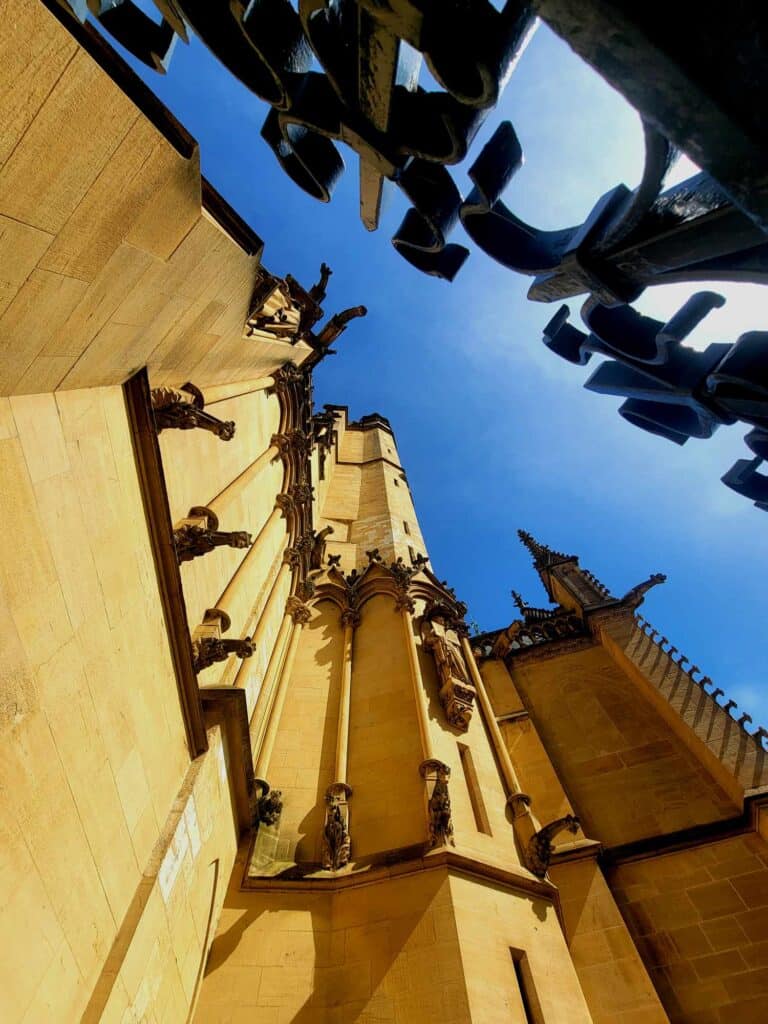
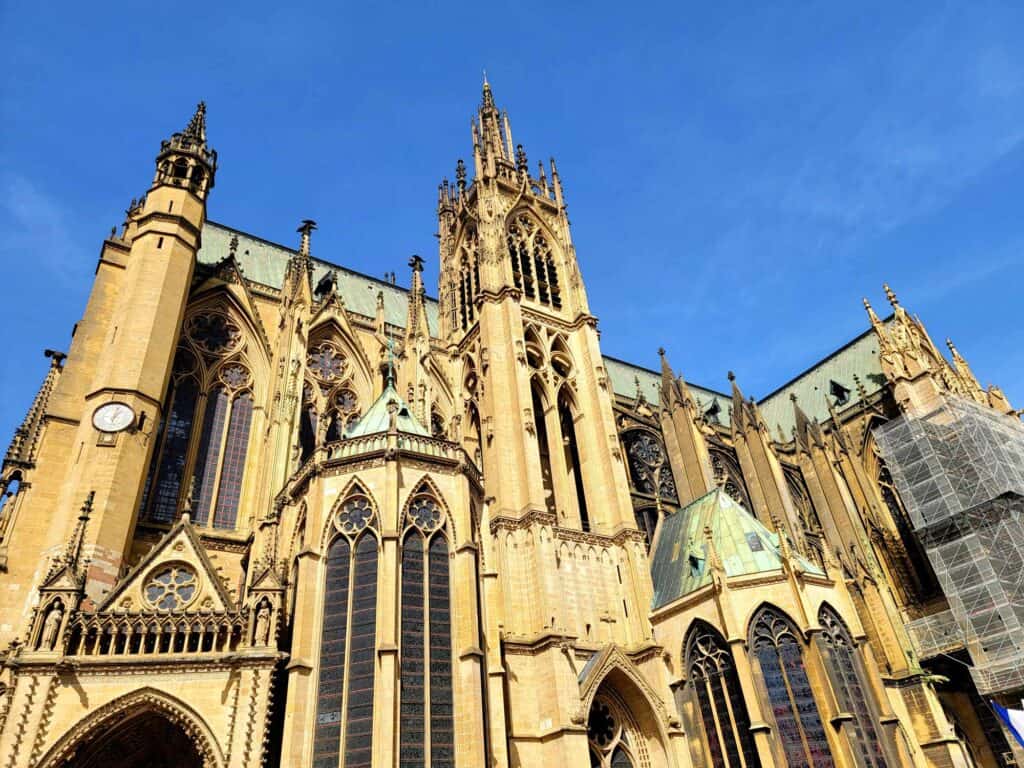
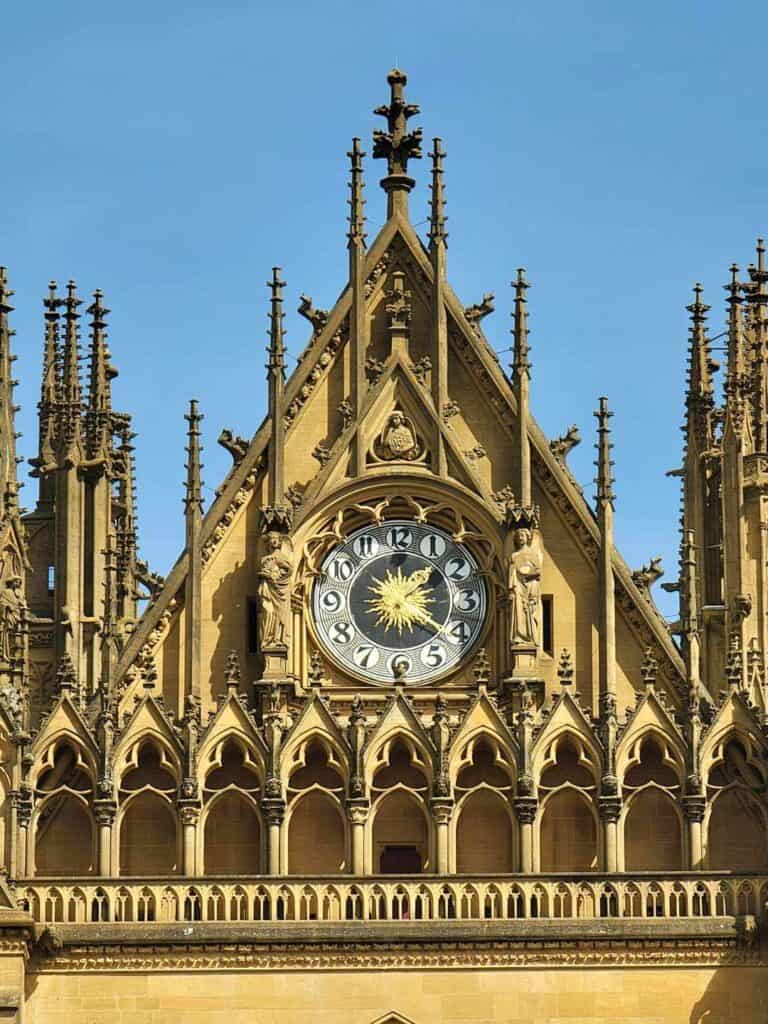
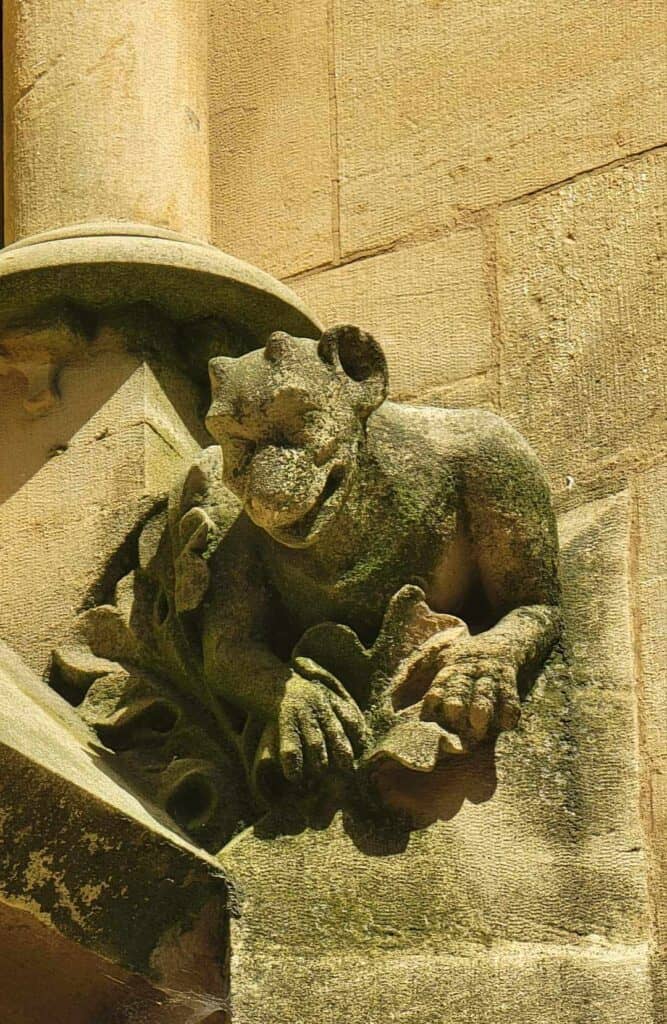
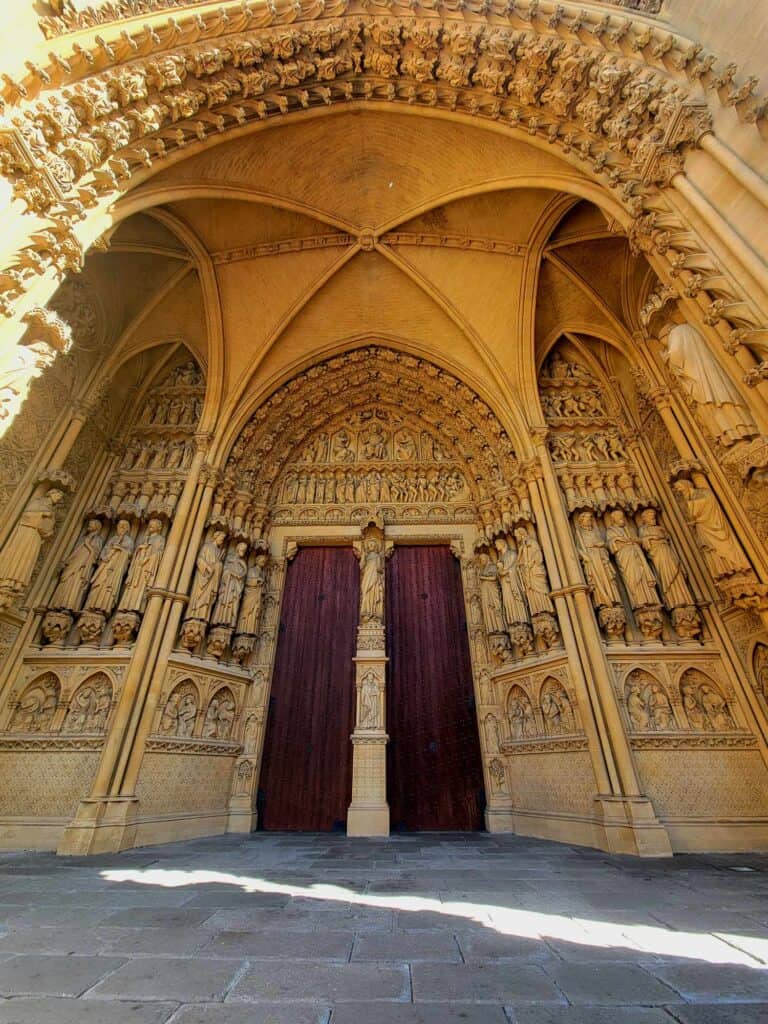
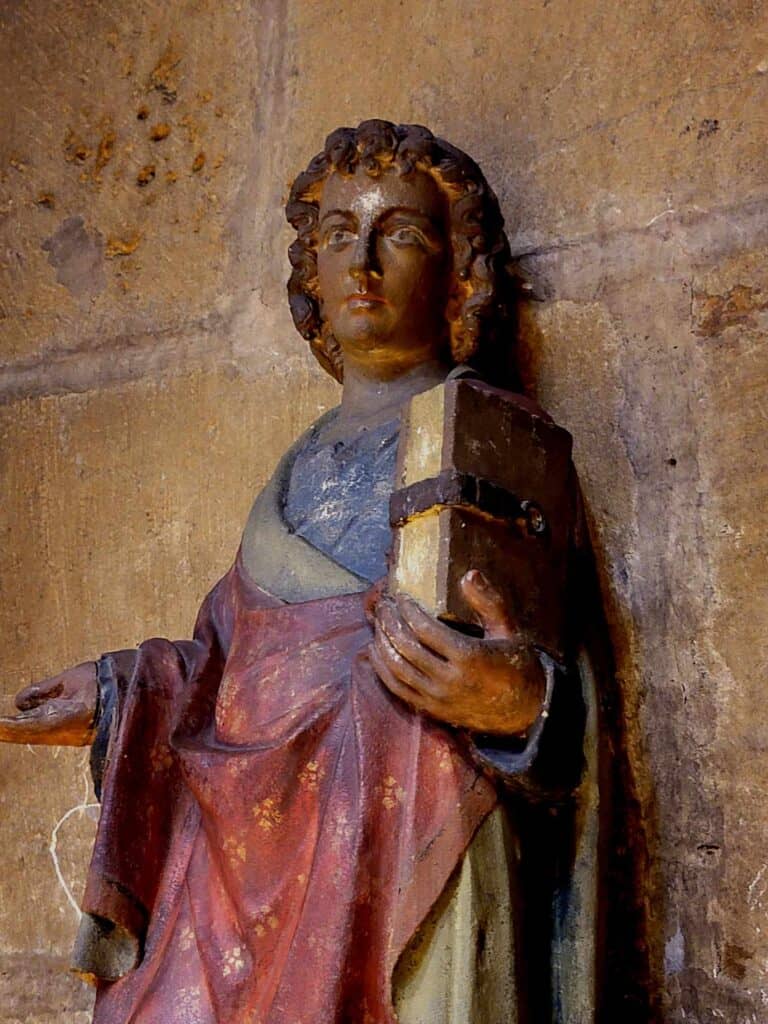
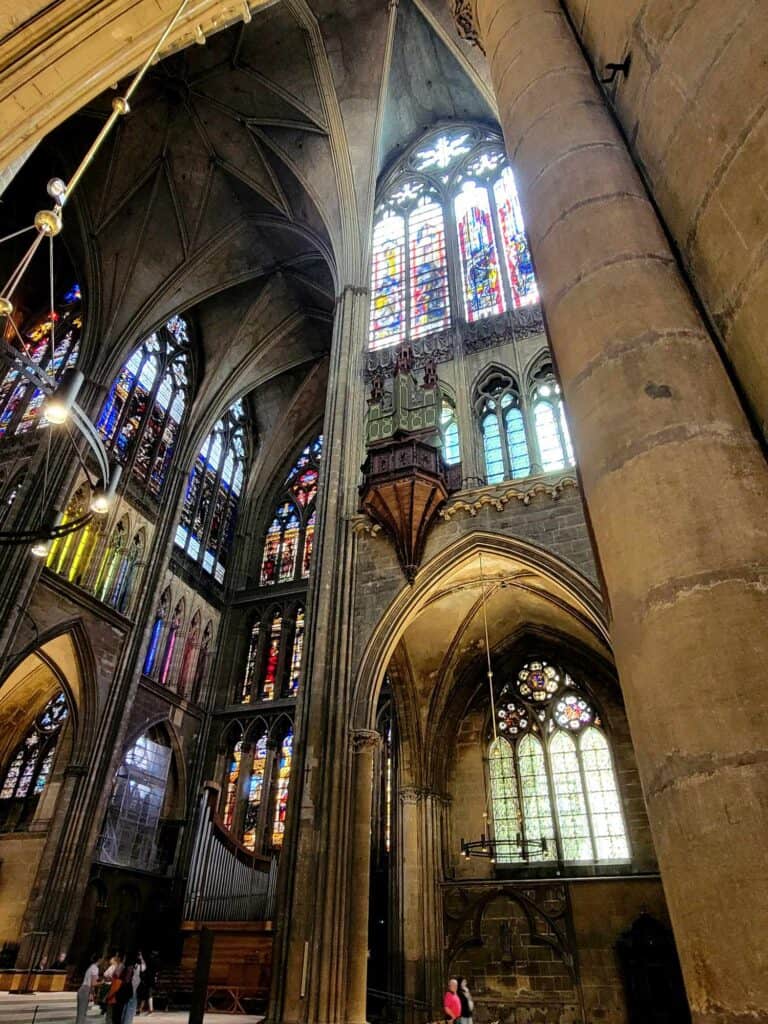
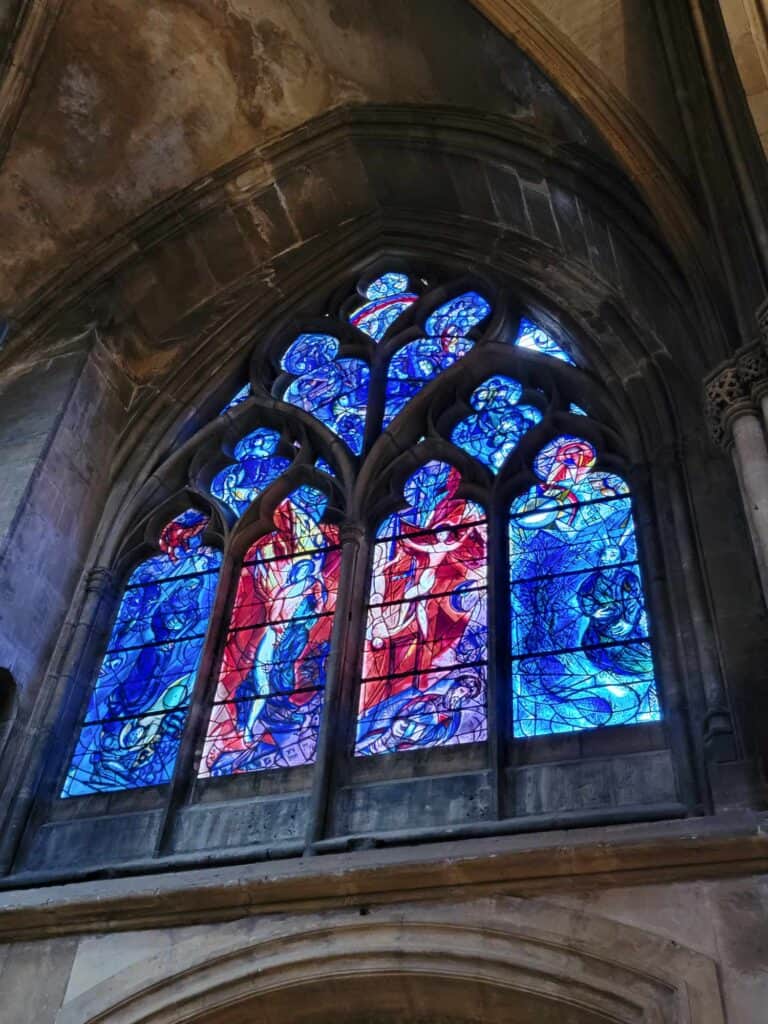
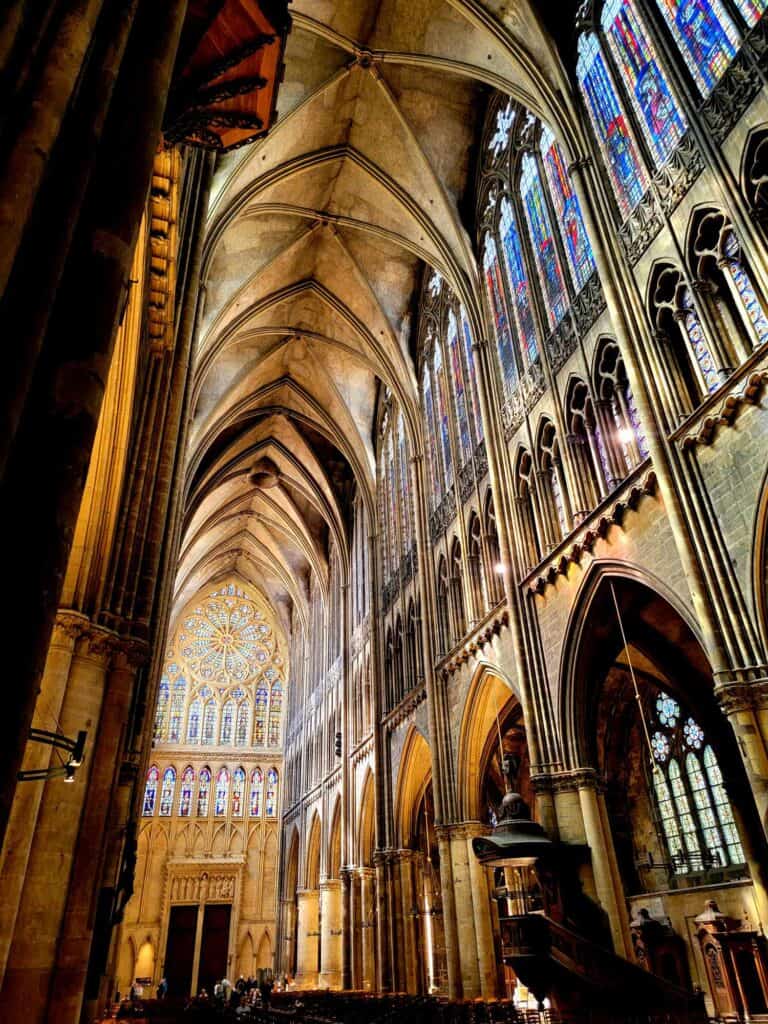
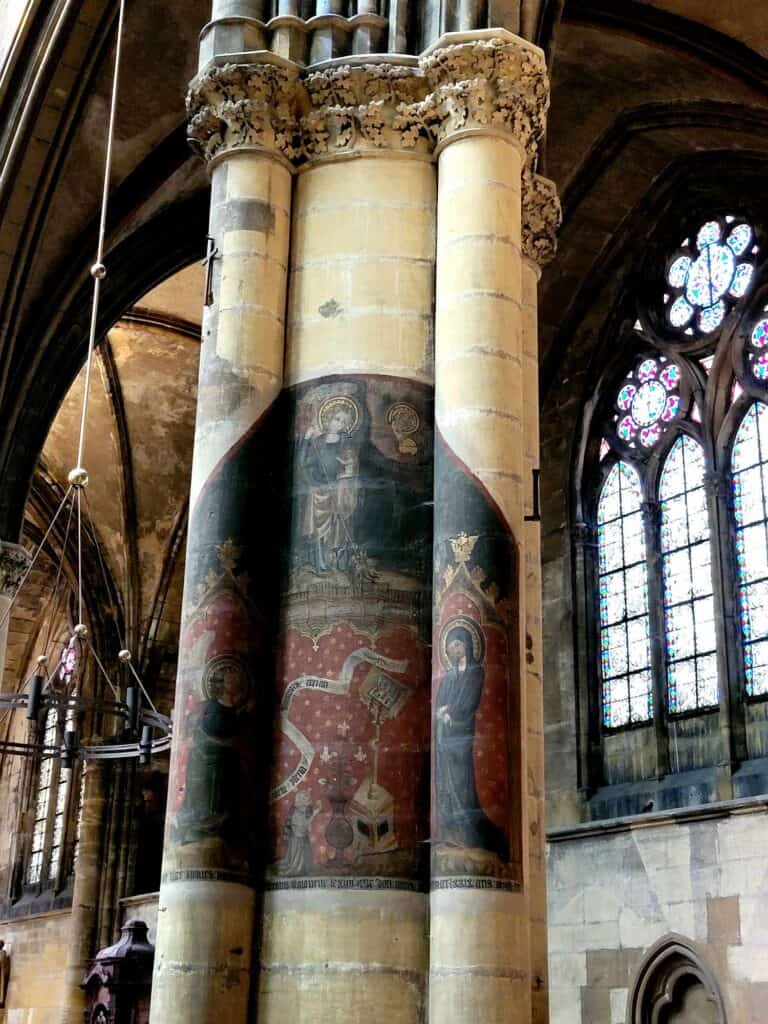
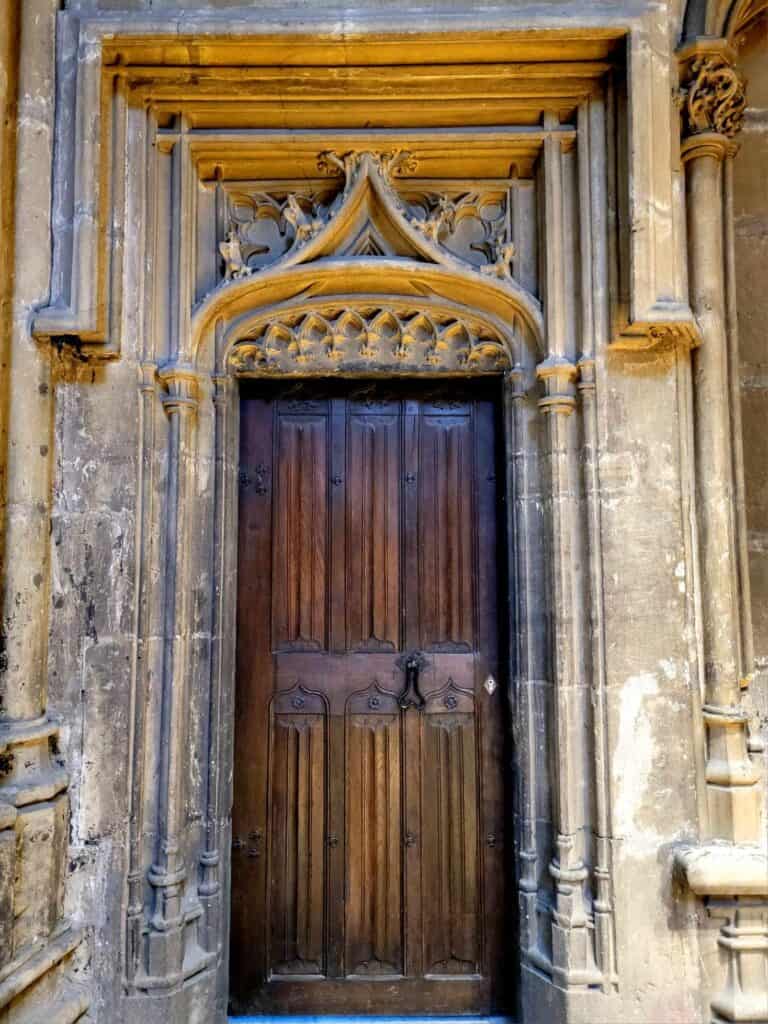
The Gregorian chant (then called the Messin chant) was created in Metz in the 8th century. While the cathedral was not standing at that time, there are other buildings here that were, and you can’t help but imagine what a good Gregorian chant would sound like in this cavernous space. Did I mention that it also has the tenth highest nave? This cathedral is no slouch.
And make sure to find the baptismal font which looks like a giant bath tub. That’s because it was repurposed from the old Roman baths! The baths in Metz were not large open bathing pools, but smaller tubs which held 5 or 6 people at a time. This one is made of solid bronze and scholars believe it was most likely originally made in Egypt!
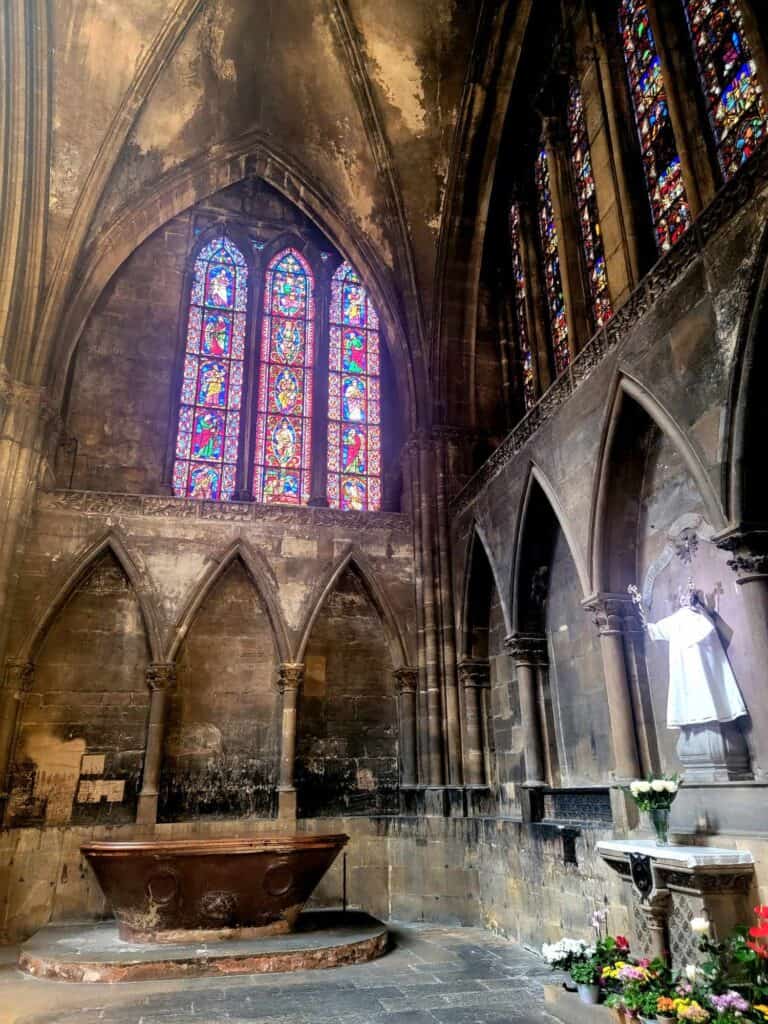
Give yourself at least an hour or more to explore this space, and don’t forget to look down once in a while to appreciate the sculpture, polychrome paint, and all the other treasures. There is also a crypt which opens at 2:00pm and features models of the cathedral over the centuries, and several burials of Bishops of Metz. There are also occasional exhibitions. No pictures allowed there.
Admission to the cathedral is free, and it is open every day from 8am-6pm. Admission to the crypt with special exhibit is €9.
5. Les Musées Cour d’Or
In an old Carmelite convent, you’ll discover three museums in one! The last time we were there, artists and craftspeople were on site selling their beautiful wares.
The Musée Archaeologique is loaded with Gallo-Roman archaeological discoveries, including the preserved ruins of Roman baths, incredible mosaics, markers and grave goods, household items, statuary, and even an impressive marble altarpiece from the Roman temple of Mithras which was discovered when building an army barracks!
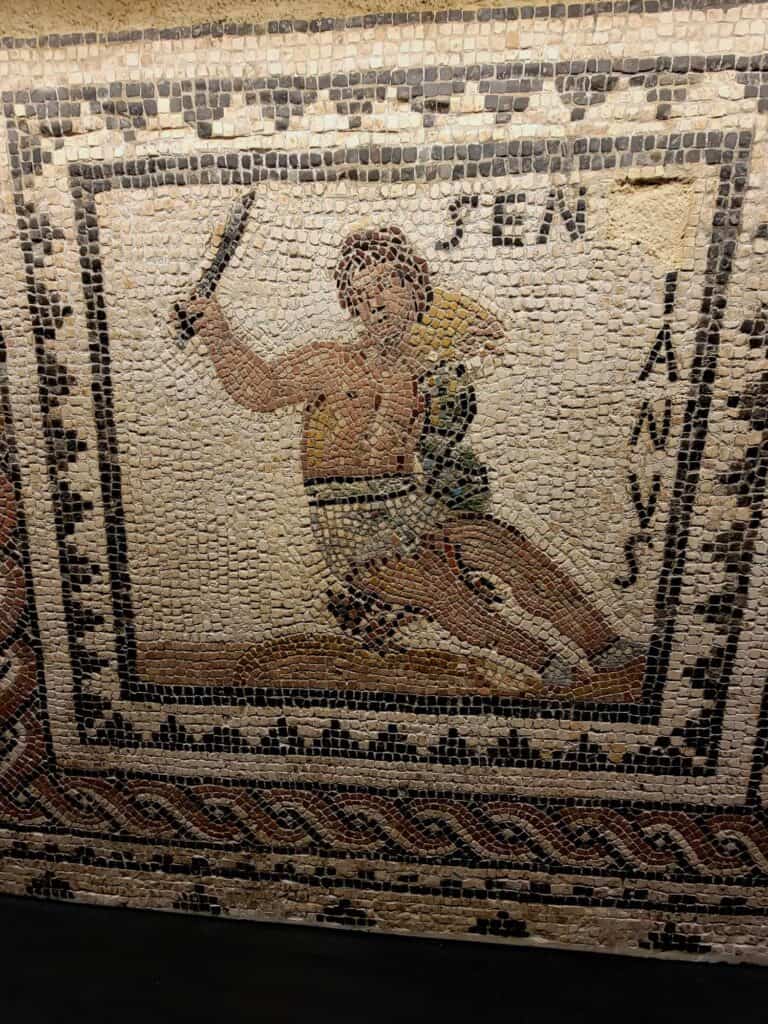
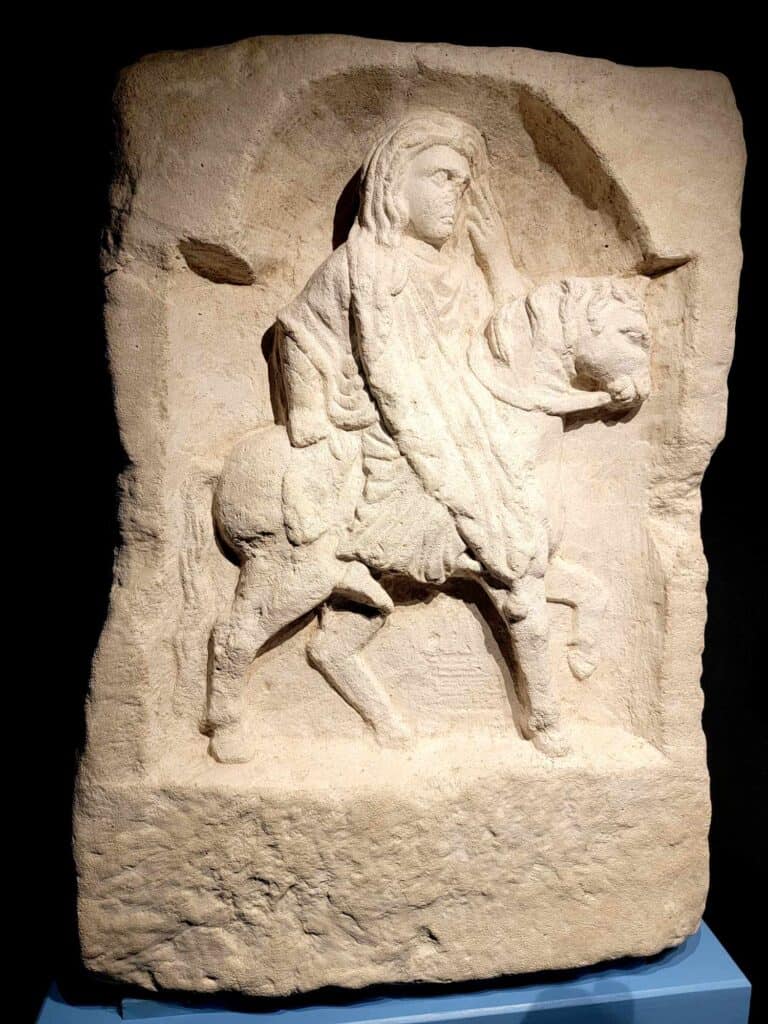
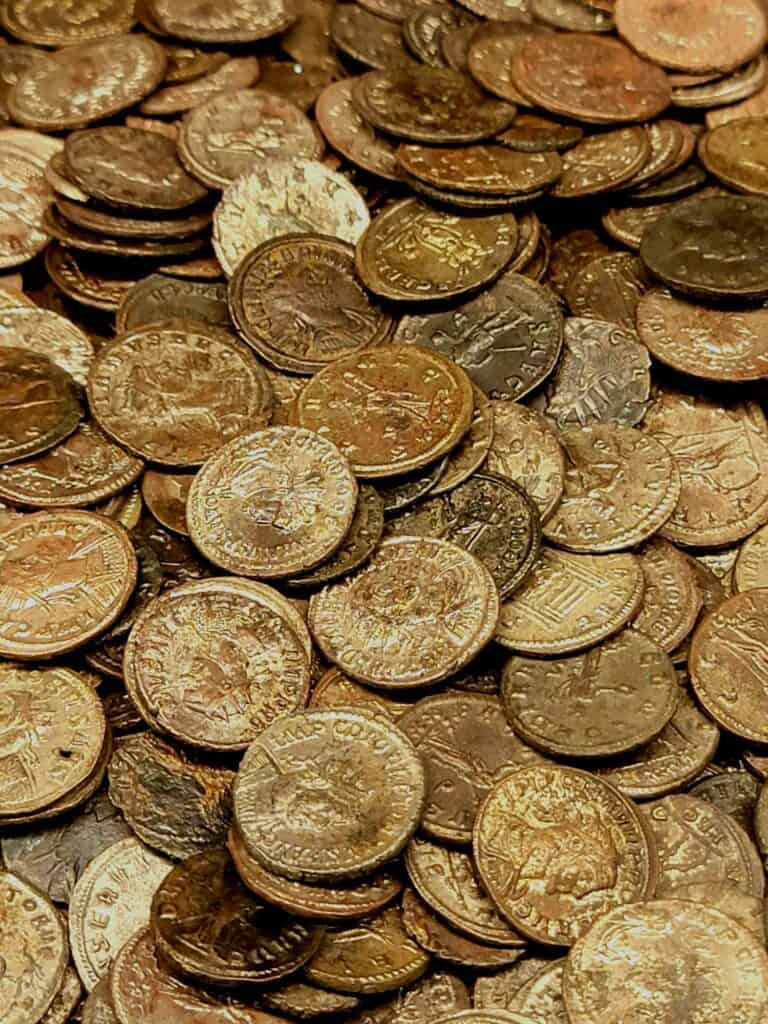
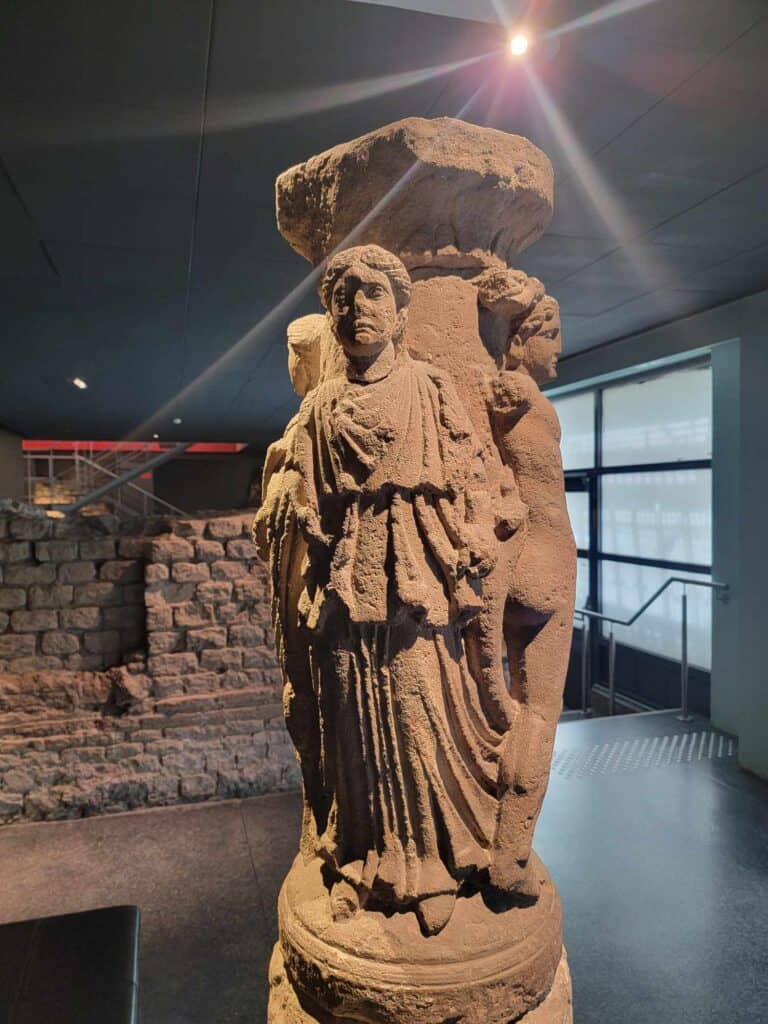
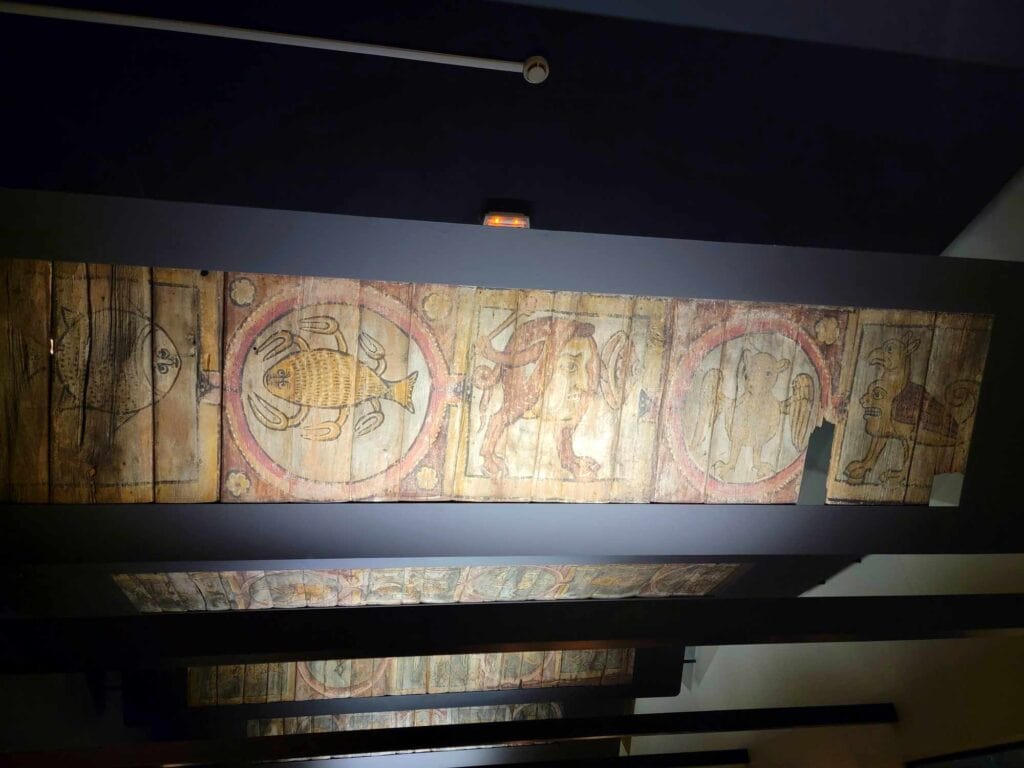
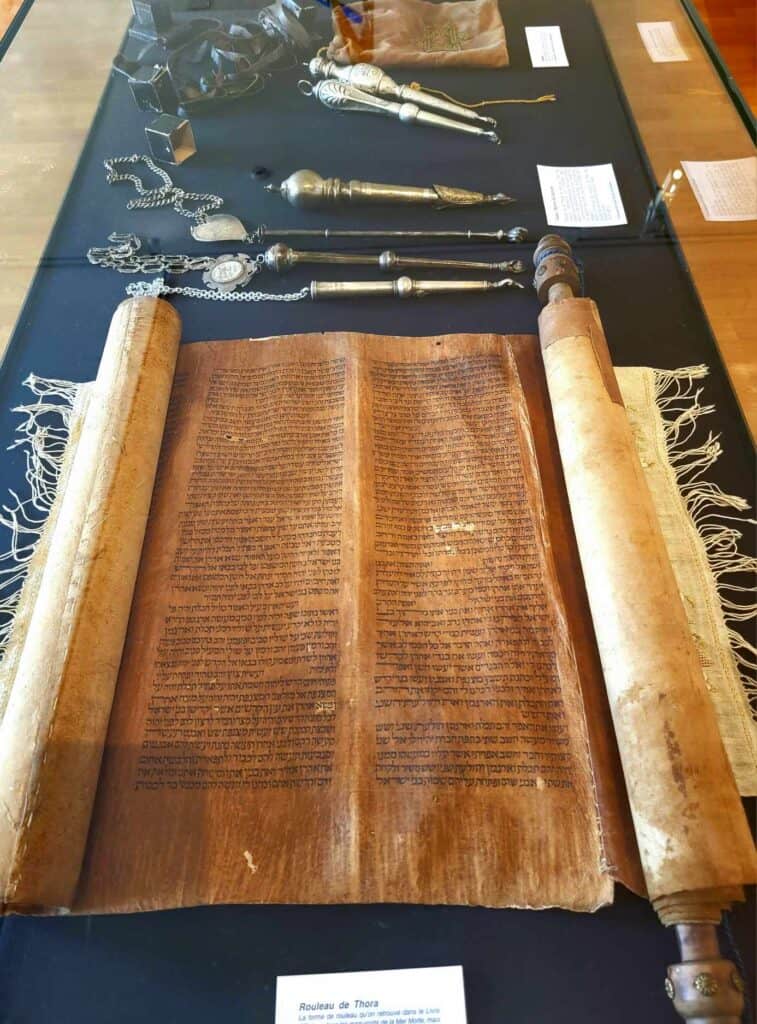
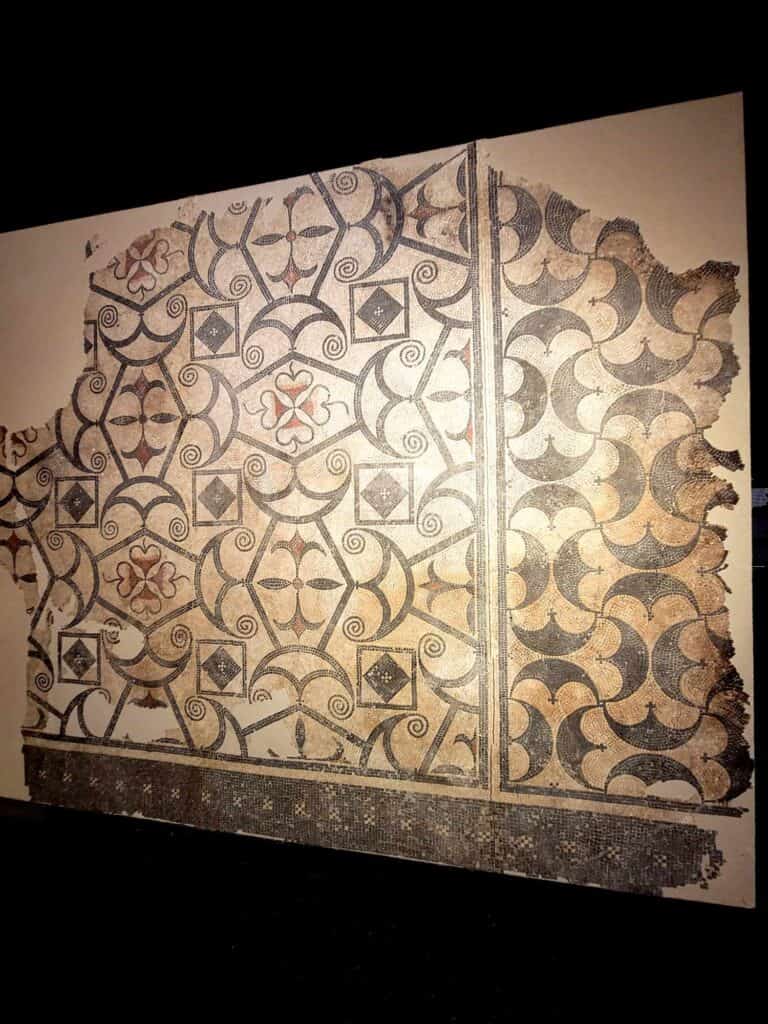
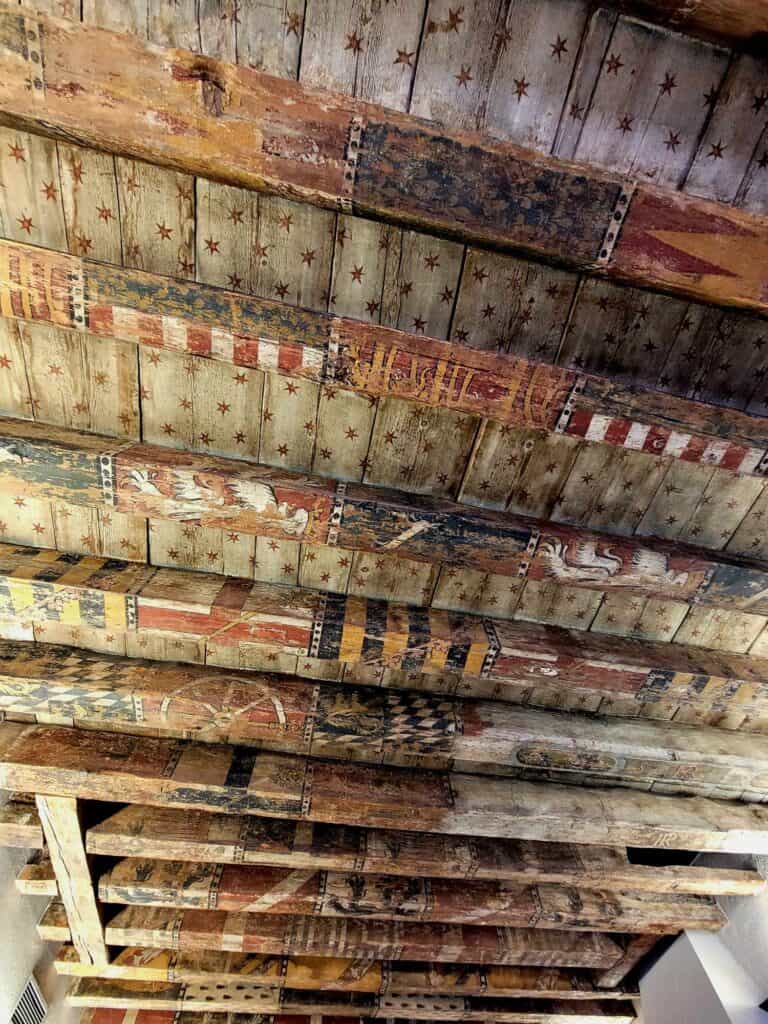
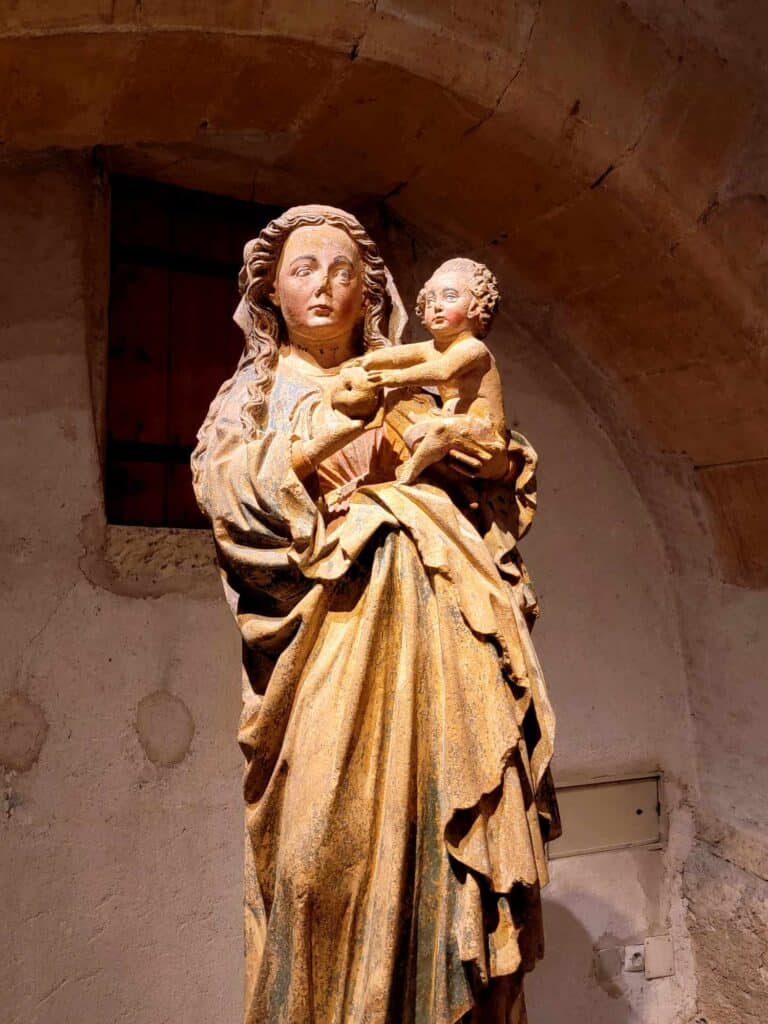
The rest of the complex houses the Medieval section, the Museum of Architecture, and the Museum of Fine Arts featuring works by Delacroix, Sargent, and Corot, among others.
You’ll wind around a labyrinth of rooms with delightful surprises around every turn, including incredible architectural details and amazing treasures discovered in Metz over the centuries.
There are lots of little staircases, and I did not notice an elevator so give this one a think if you have mobility issues.
The museum is open Wednesday – Monday from 10am-12:45pm and then again from 2pm to 6pm. I recommend going in the afternoon at 2:00 to make sure you don’t run out of time!
Admission is free!
6. Les Halles Metz Covered Market
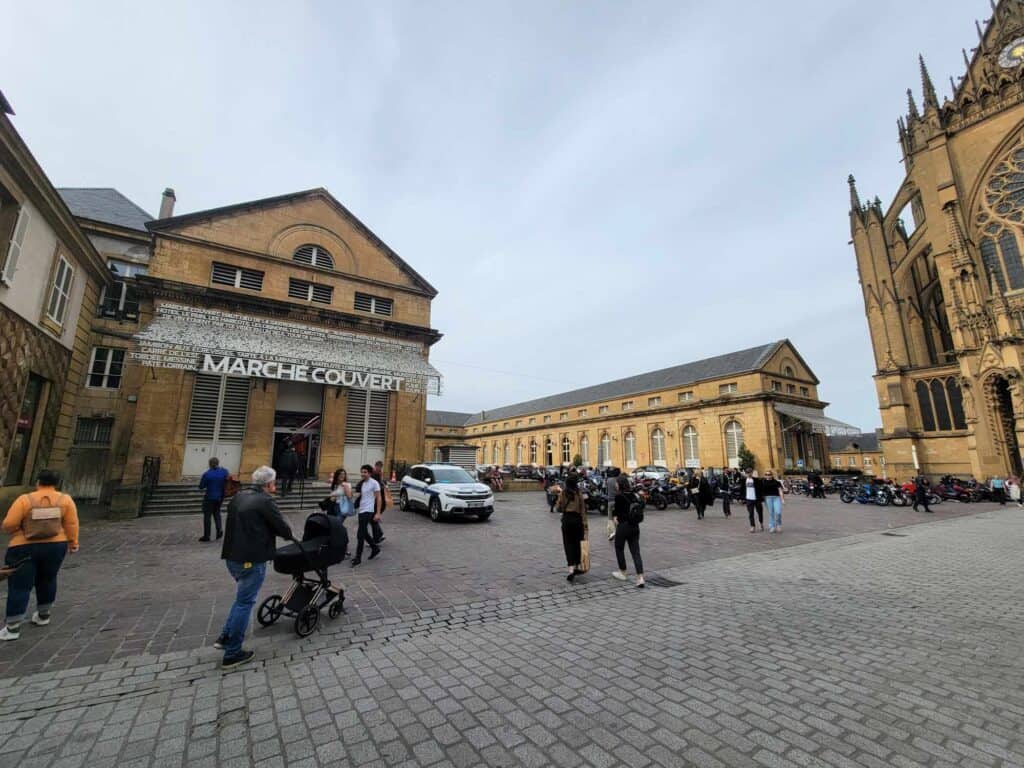
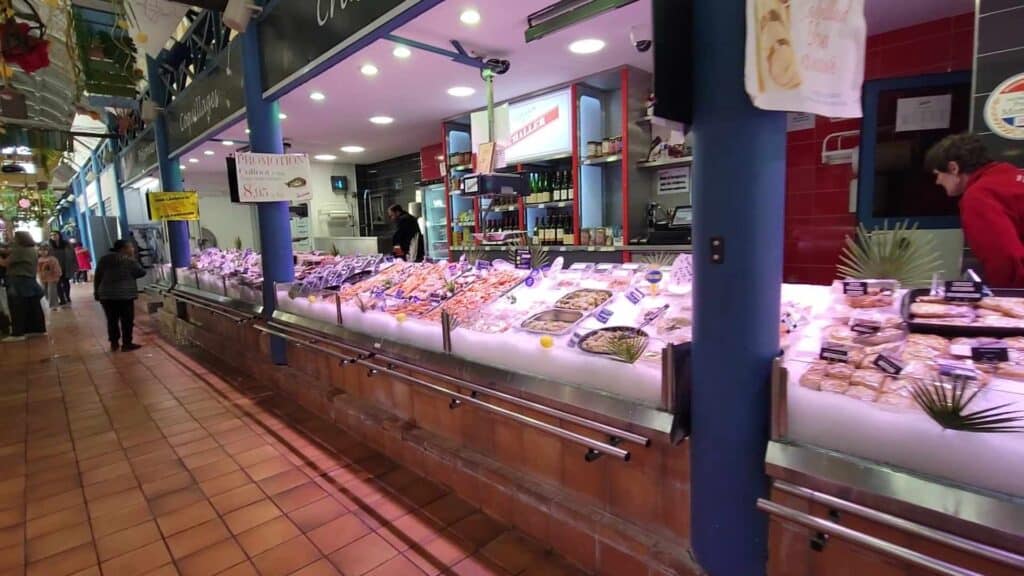
Originally intended to be a Bishop’s residence but never completed, the large U-shaped covered market sits adjacent to the cathedral. Inside you’ll find an exceptional array of fresh fish, produce, cheeses, meats, baked goods, and more.
Every time we go we leave with a basket of goodies – fresh morels, heirloom tomatoes, fresh seafood, sausages, or an assortment of cheese. But even if you’re staying in a hotel, there are still lots of options for picnics or late-night snacks. You’ll also find interesting local treats like mirabelle (yellow plum) jam you can pack in a suitcase. A couple places will cook for you at midday, and there’s a little section in the center where you can eat.
7. Sainte-Ségolène Church/Place Jeanne d’Arc
It’s hard not to be overshadowed by Metz’s stunning cathedral, but the Église Sainte-Ségolène is worth a visit on its own. Dating from the 13th century, its oldest stained glass is about 800 years old! There is also lovely original polychrome painting, sculptures, golden mosaics, and a stunning tile floor.
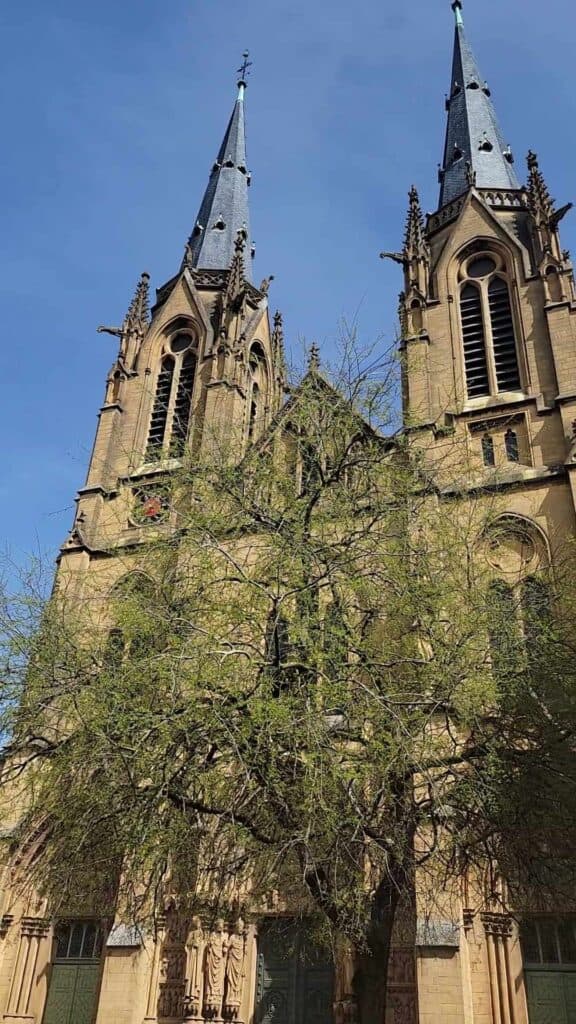
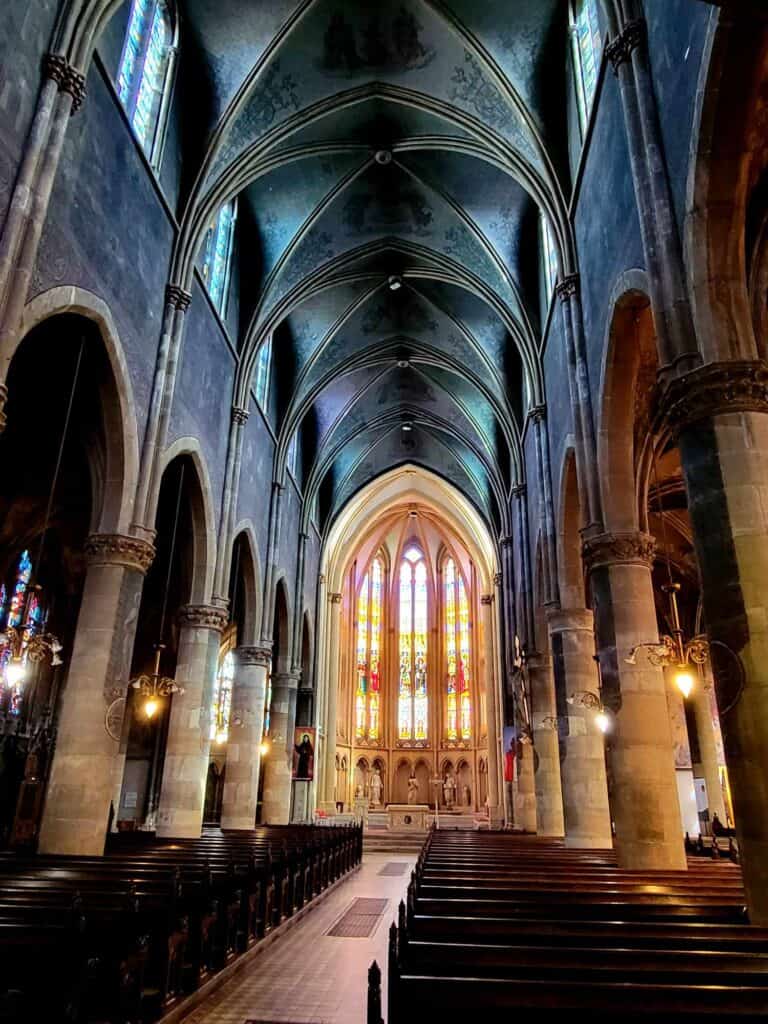
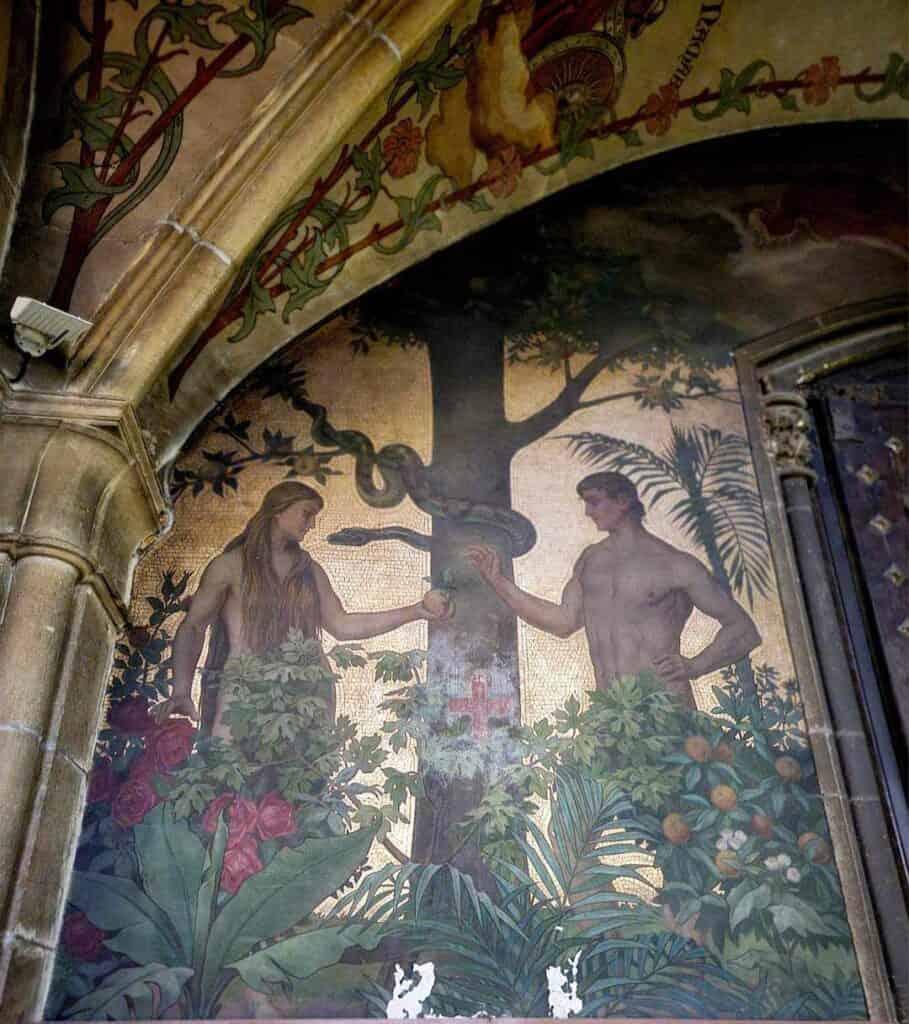
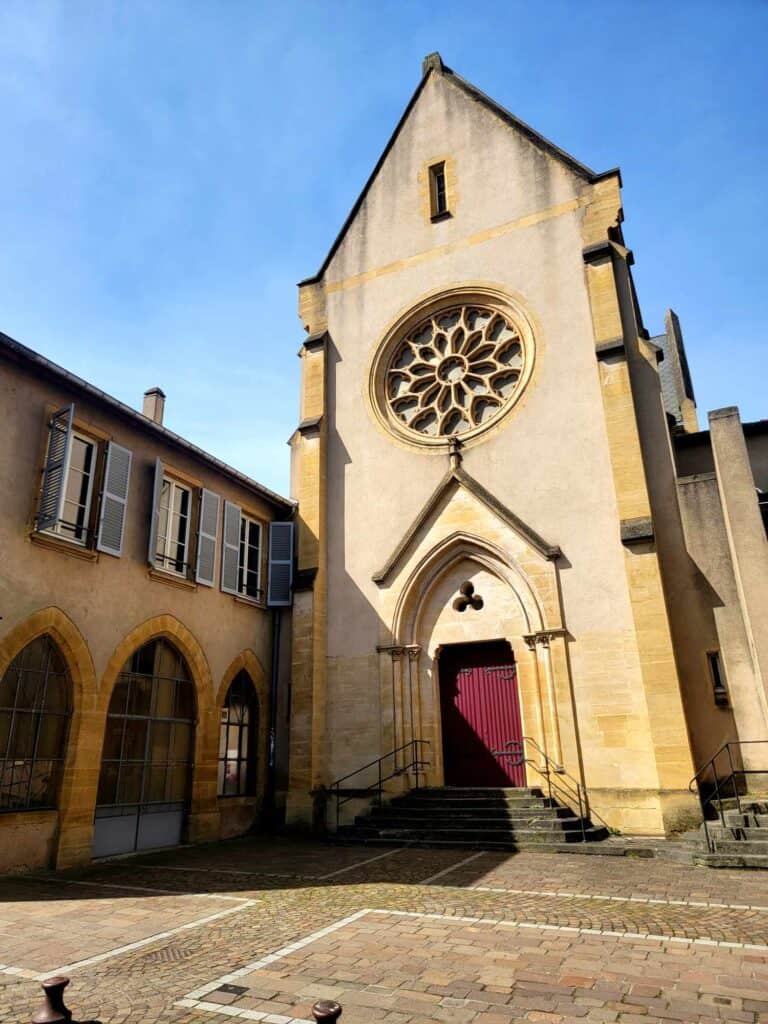
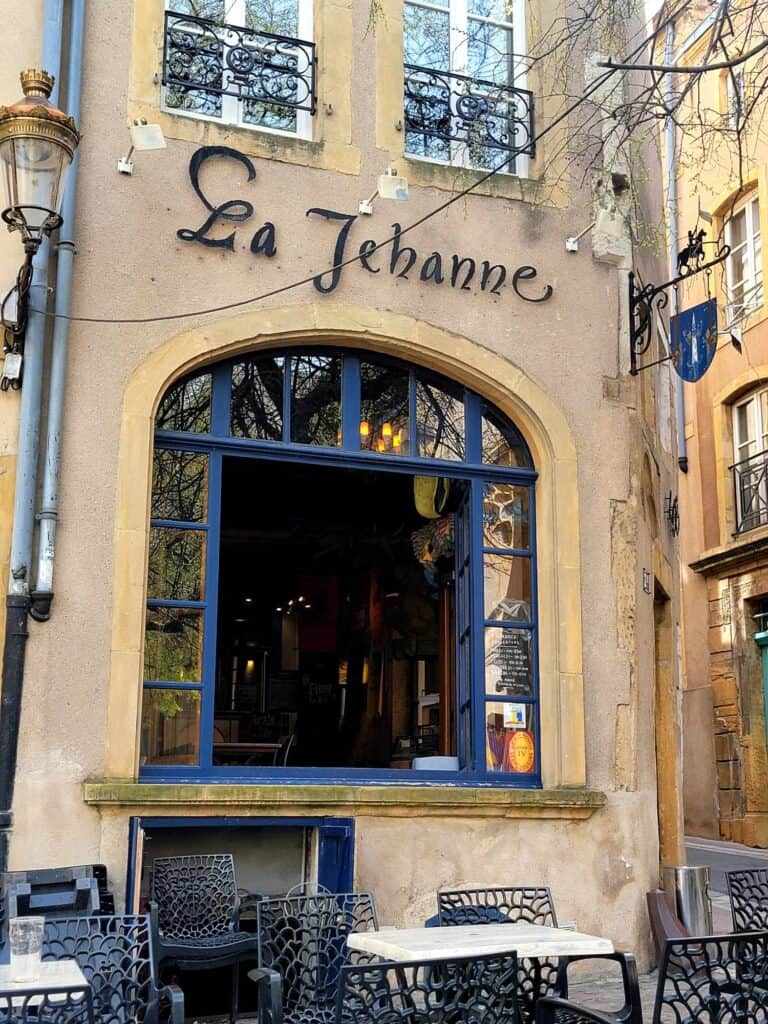
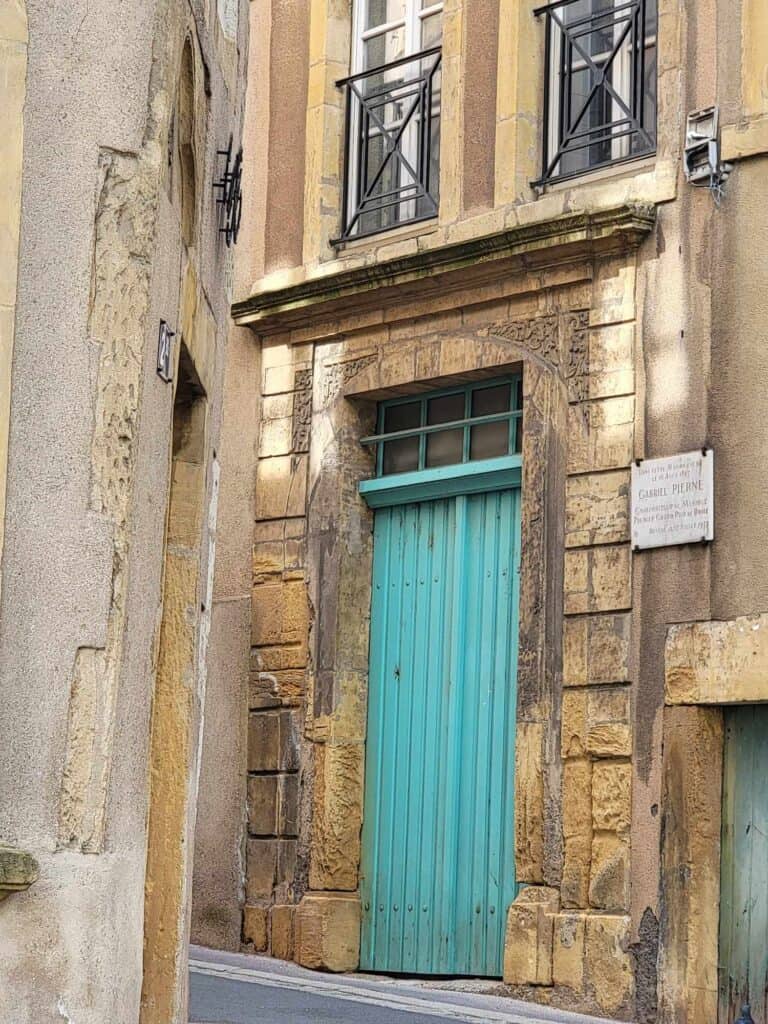
It’s located right on the Place Jeanne d’Arc which has a wealth of interesting things all around. There’s a beautiful fountain; an open cobblestone plaza; a convent-turned-music-venue; the birthplace of composer and conductor Gabriel Pierné; and a fabulous spot called La Jehanne where you can sit outside, have a glass of wine or a bite to eat, and just enjoy the stunning views, and some ‘joie de vivre!’
8. Pompidou Center
One of France’s most visited cultural venues outside of Paris, the Pompidou Center is a modern and contemporary art museum with an amazing reputation. A definite must-see if you enjoy something on the modern side, it opened its doors in 2010.
Even if you just walk past, it’s worth it just to see the incredible roofline of the building which was fashioned after a Chinese hat.
You can find information on admission and opening hours for the Pompidou Center at this link.
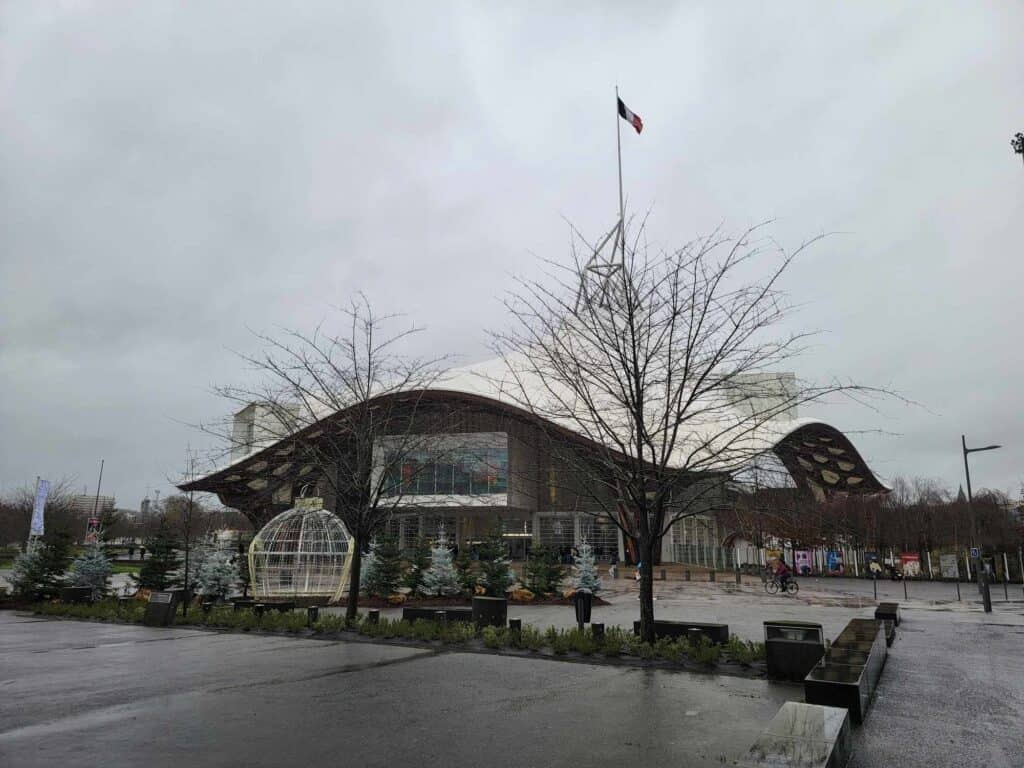
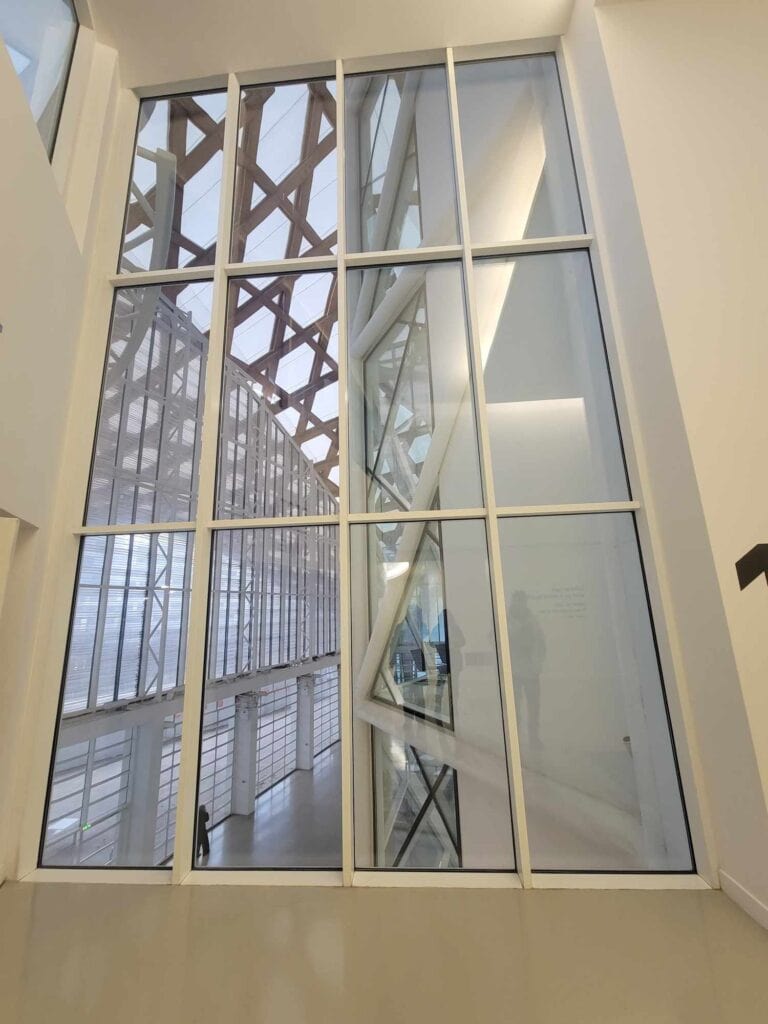
9. Imperial Quarter
The Imperial Quarter is a beautiful walkable district just outside the old city boundary, very near the train station. It was mostly built around the turn of the 20th century and German influence is very noticeable, along with some stunning Art Nouveau touches.
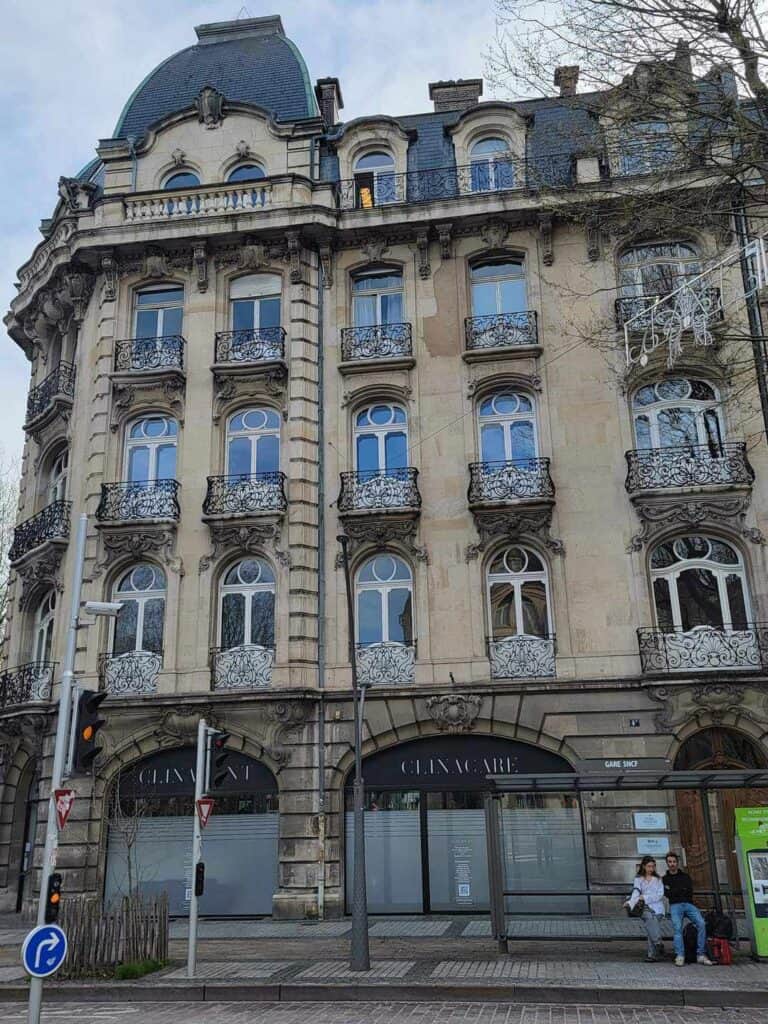
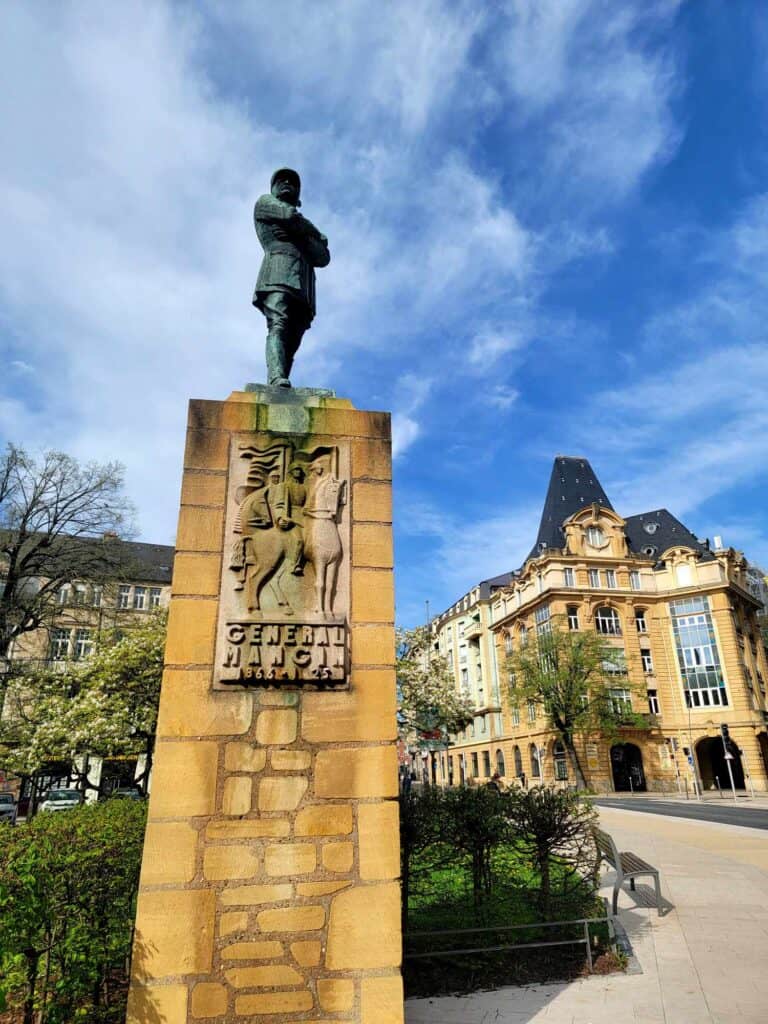
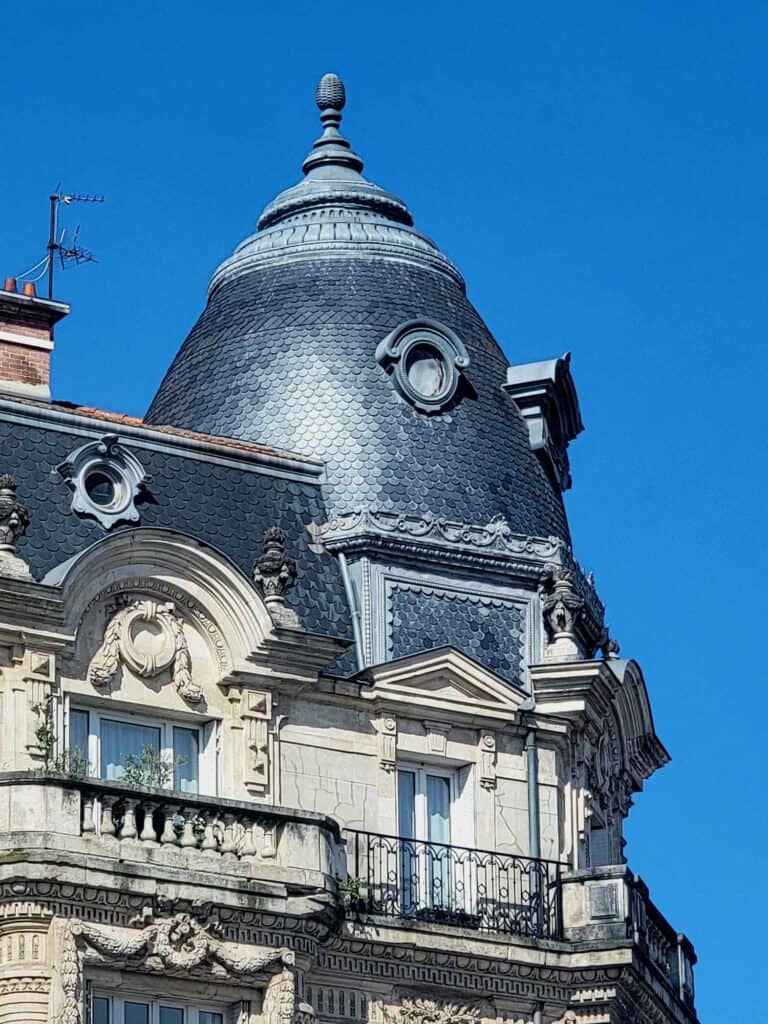
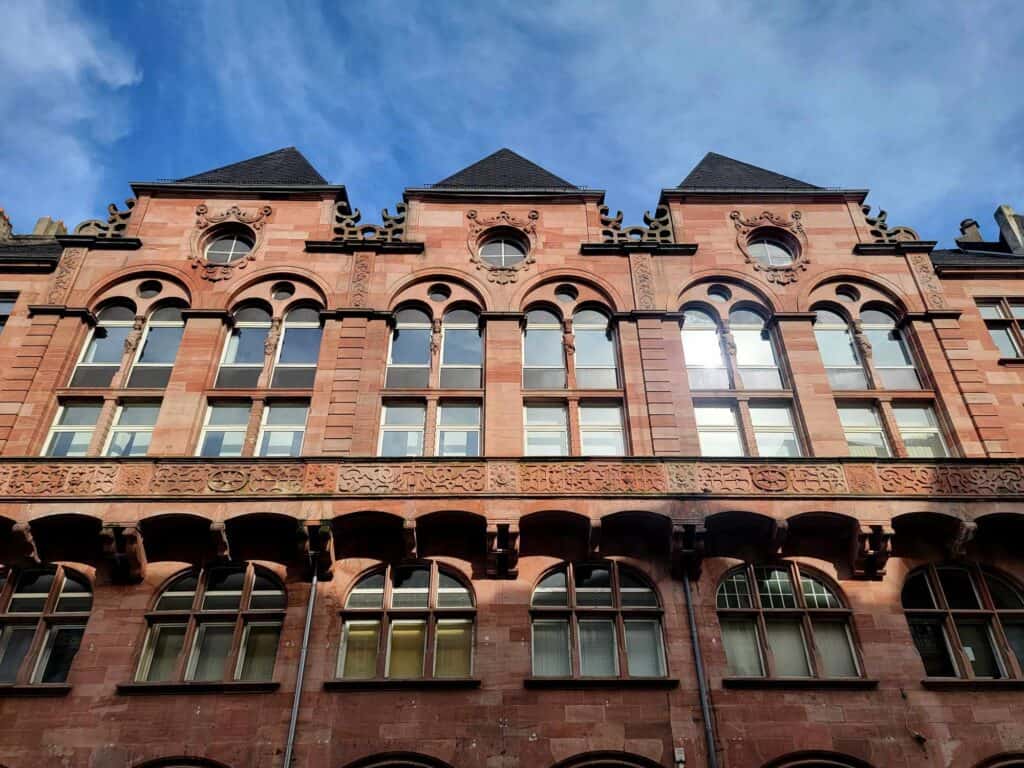
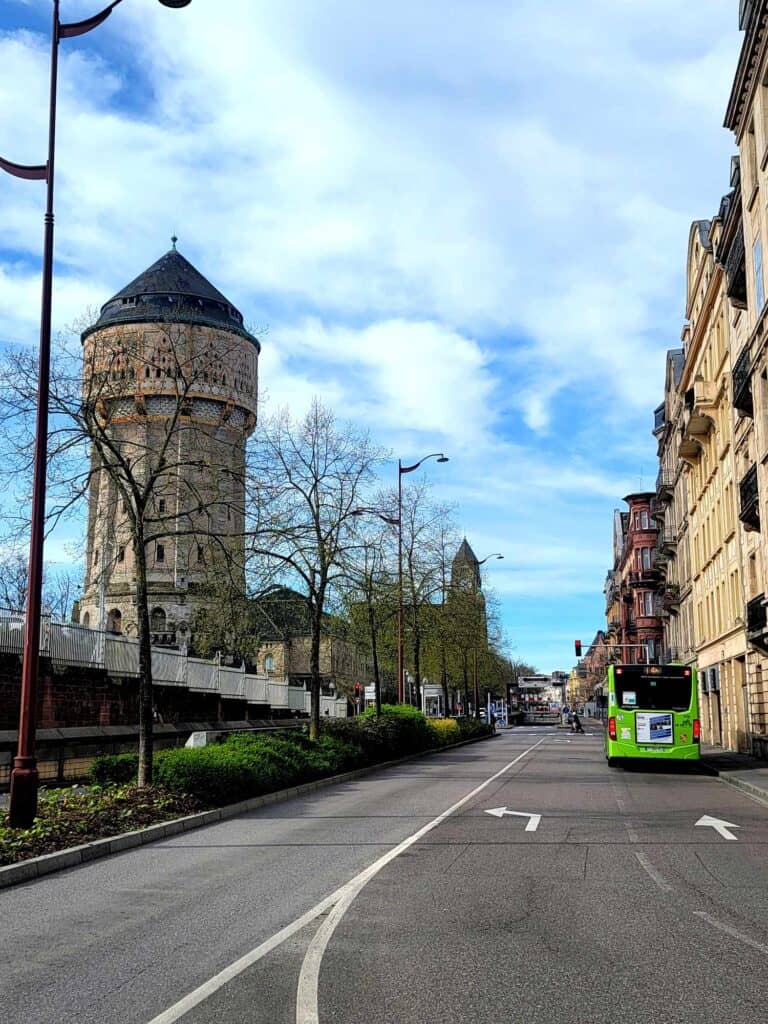
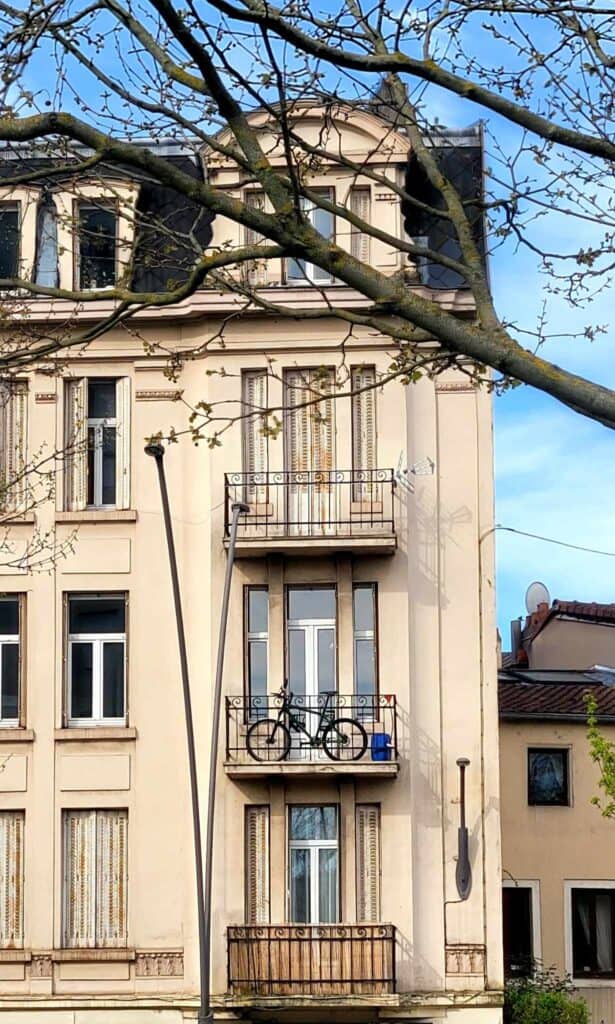
10. The Graoully
French folklore tells of the dangerous ‘Graoully,’ a dragon who lived in the arena of the Roman amphitheater in Metz with his dragony friends. For those keeping track, that would put his hangout right in front of the train station. It was supposedly conquered and eventually vanquished by Saint Clement, who tied him in a knot with his cloak and tossed him in the river Seille.
Metz used to hold a celebratory procession featuring the Graoully beginning in the 11th century, featuring a banner with a dragon head. This became more elaborate over the centuries, culminating with a huge effigy of the Graoully which was paraded through the streets to terrifying effect. That tradition ended in the 1800s, unfortunately.
But you can still have fun finding the Graoully today all throughout the city. The oldest example is on the “maison du serpent” at 10 rue Chêvremont. You can also see it elsewhere on the outside and inside of the cathedral and in the crypt, often under the foot of St. Clement.
There’s also a large effigy above Rue Taison, and a couple more on the outside of the train station.
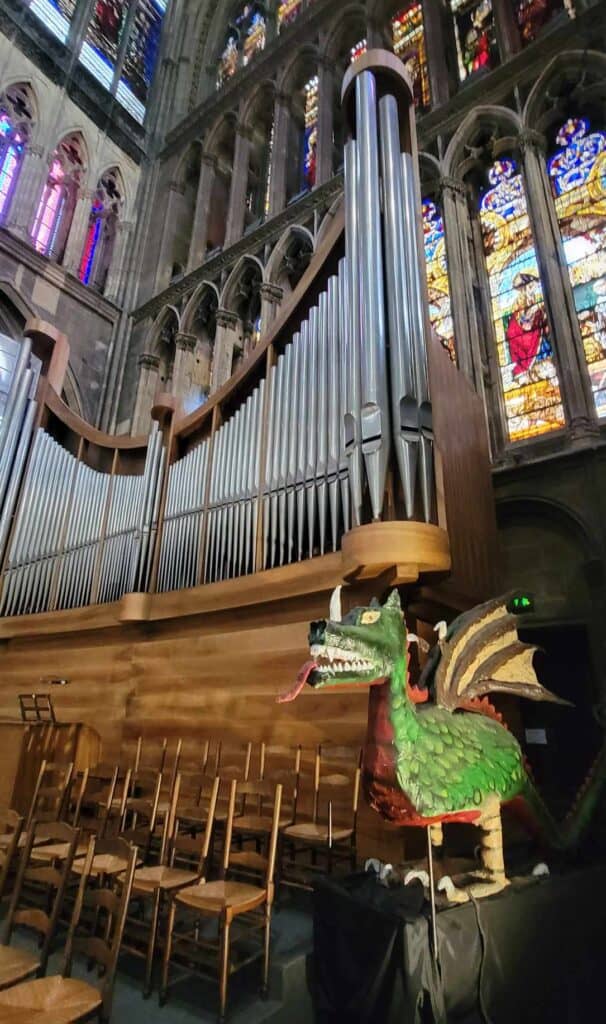
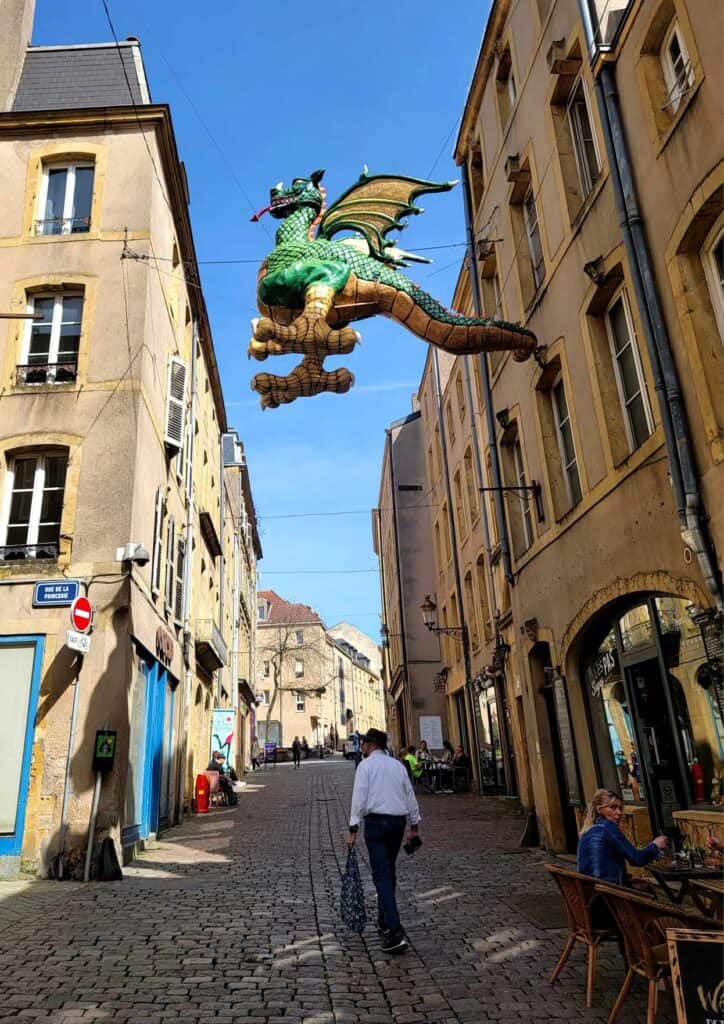

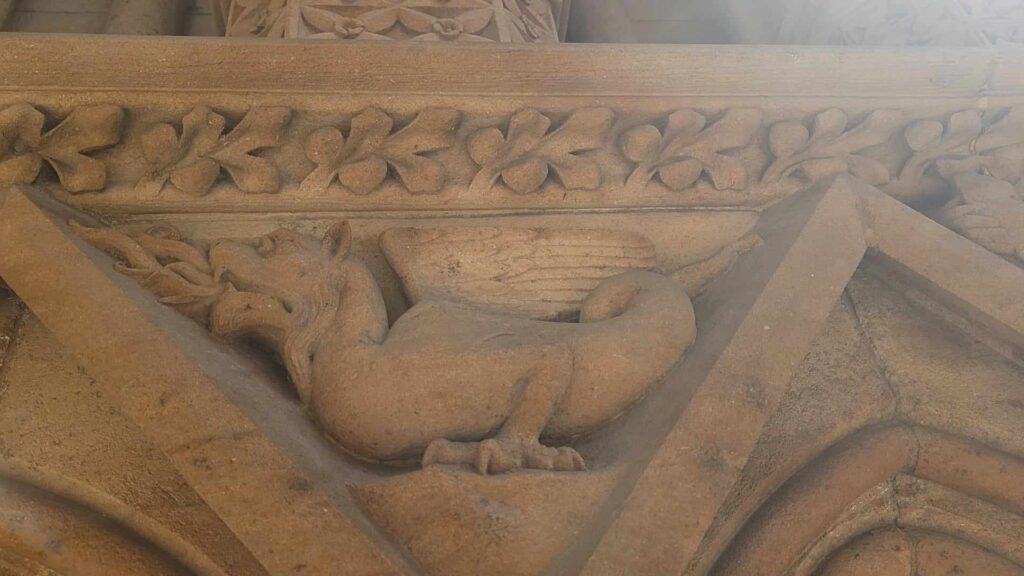
11. The Knights Templar Chapel & St. Pierre-aux-Nonains Church
The Templar Chapel in Metz was built with an interesting octagonal design in about 1180. Additional reconstruction work happened in 1220, but the surrounding Templar structures were demolished after the order of the Knights Templar was dissolved in the 1300s. The remaining chapel in Metz is the oldest surviving Templar structure in all of the former lands of the Holy Roman Empire!
It has sporadic hours, and even if it tells you it’s open it may not be. But if you’re lucky, you can catch it open. Entrance is free and you can find it right next to the St. Pierre-aux-Nonains Church, the oldest church in France! Before its life as a Christian church, it was a Roman gymnasium.
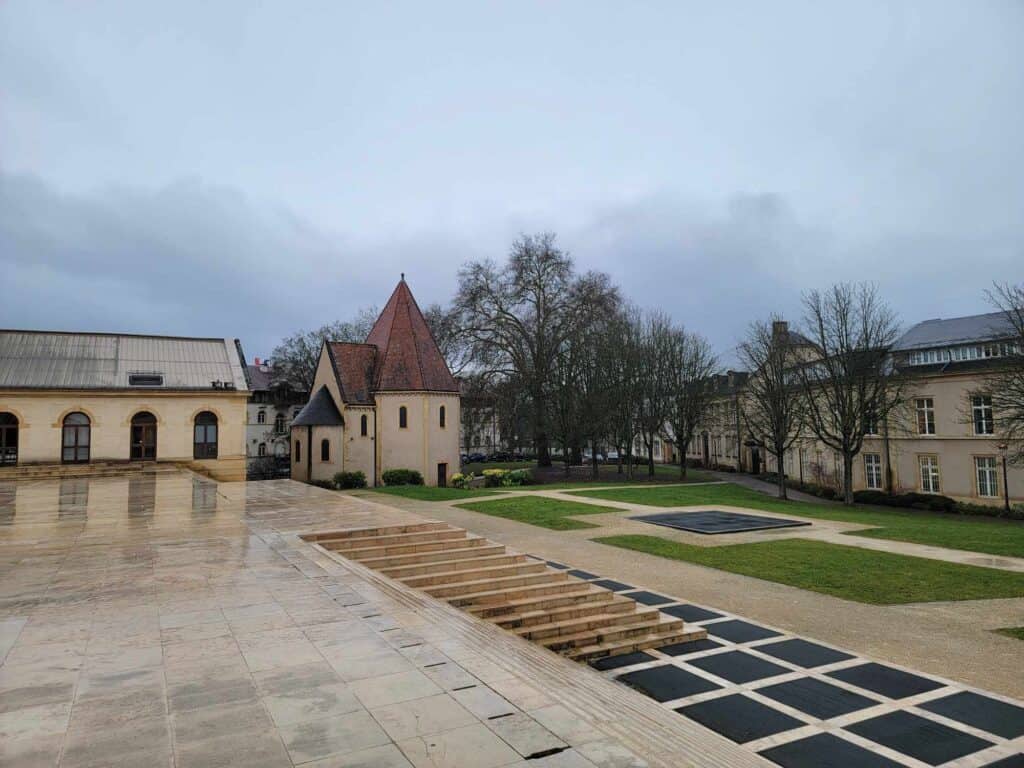
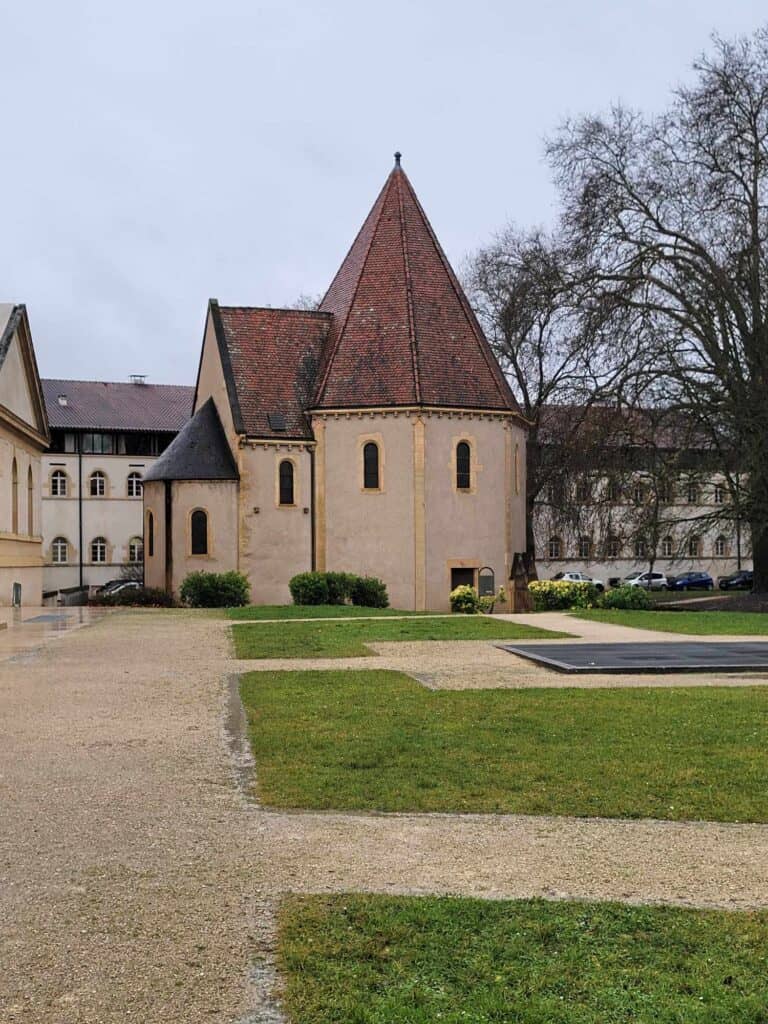
12. The City Itself
There are so many things to see in Metz, it’s impossible to quantify all of them. Part of the fun is the discovery, the people watching, the random architecture, the shops and galleries, the fountains, the cafés… all a feast for the senses. Take some time to just soak it in to fully appreciate your time here.
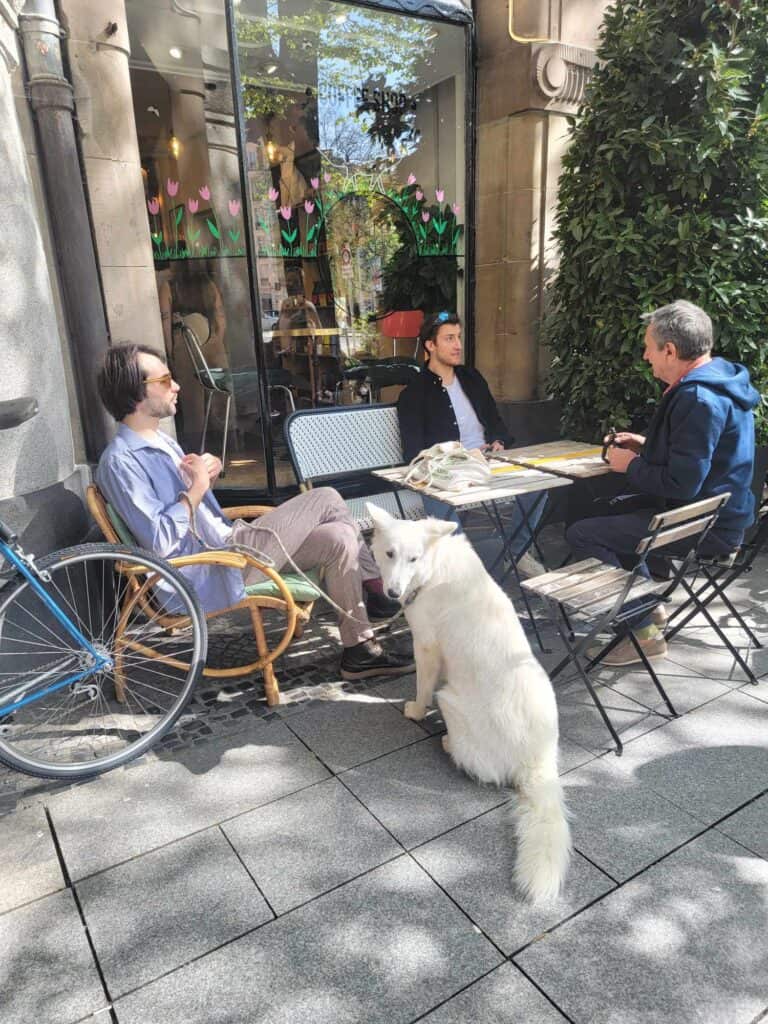
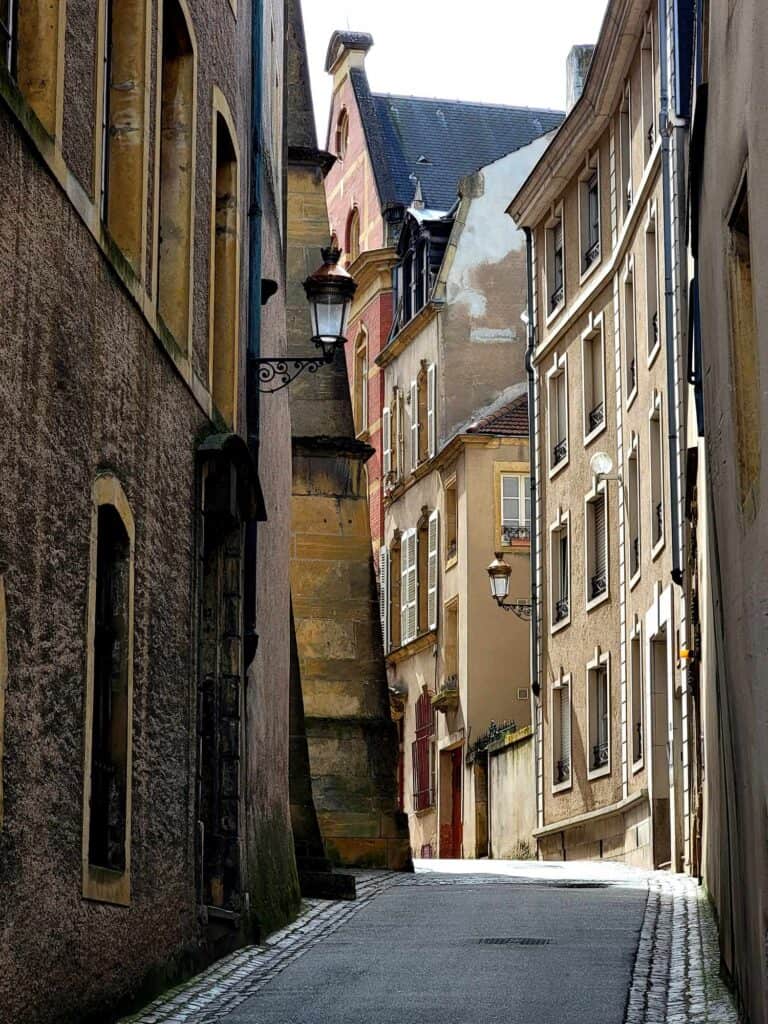
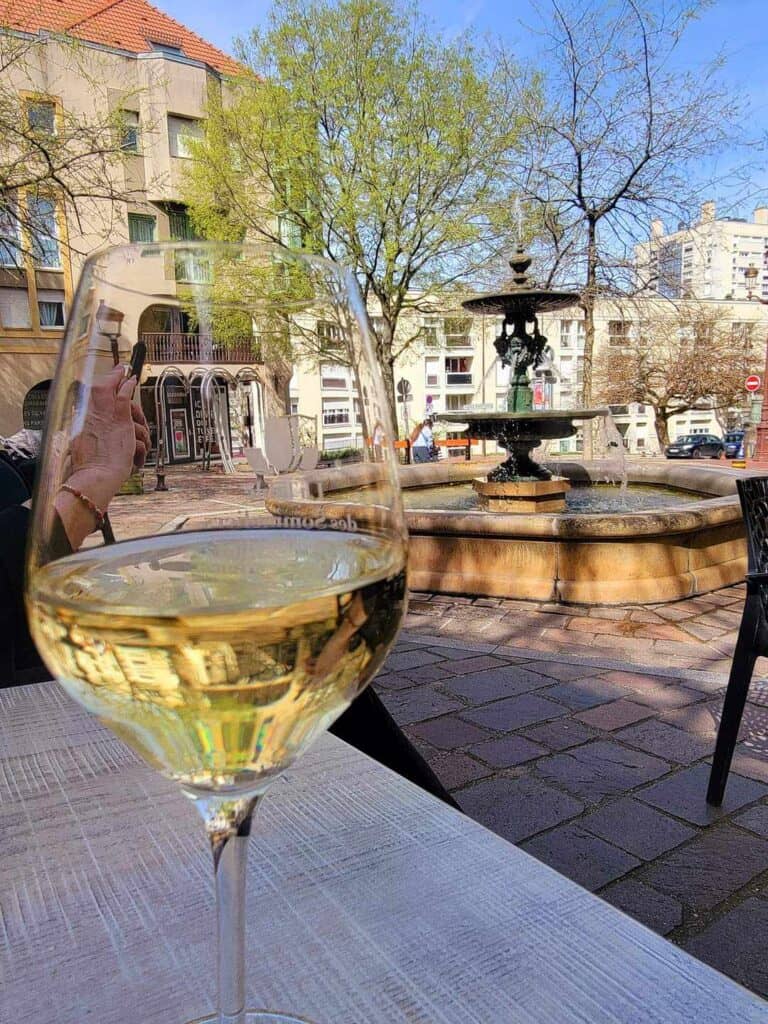
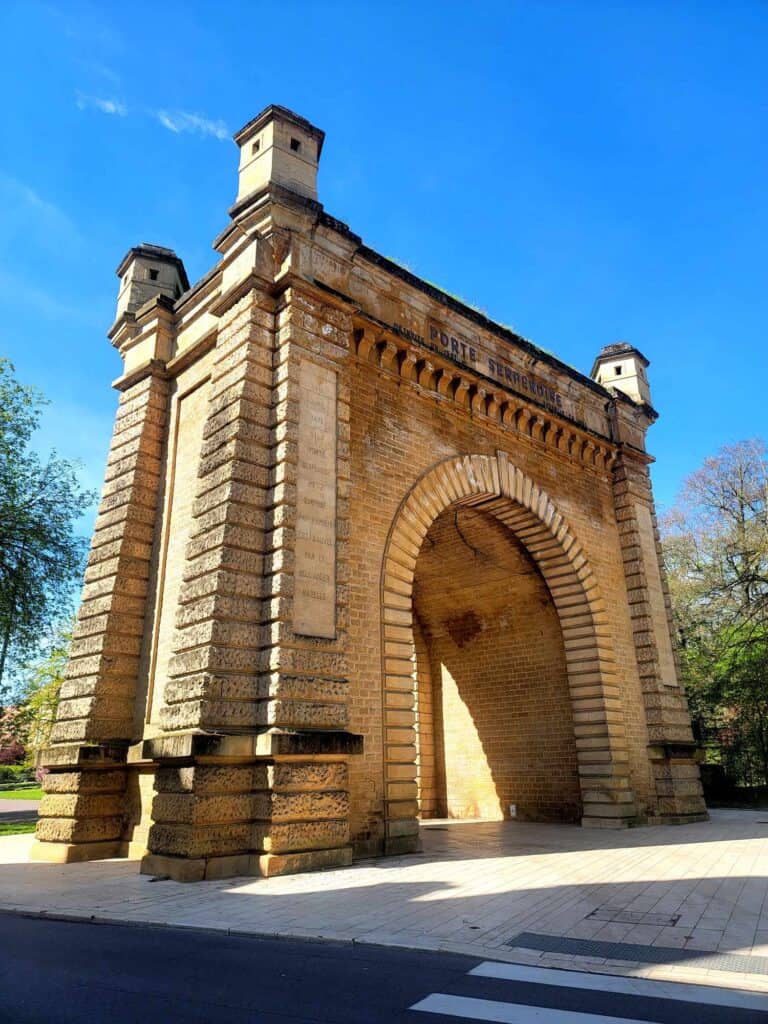
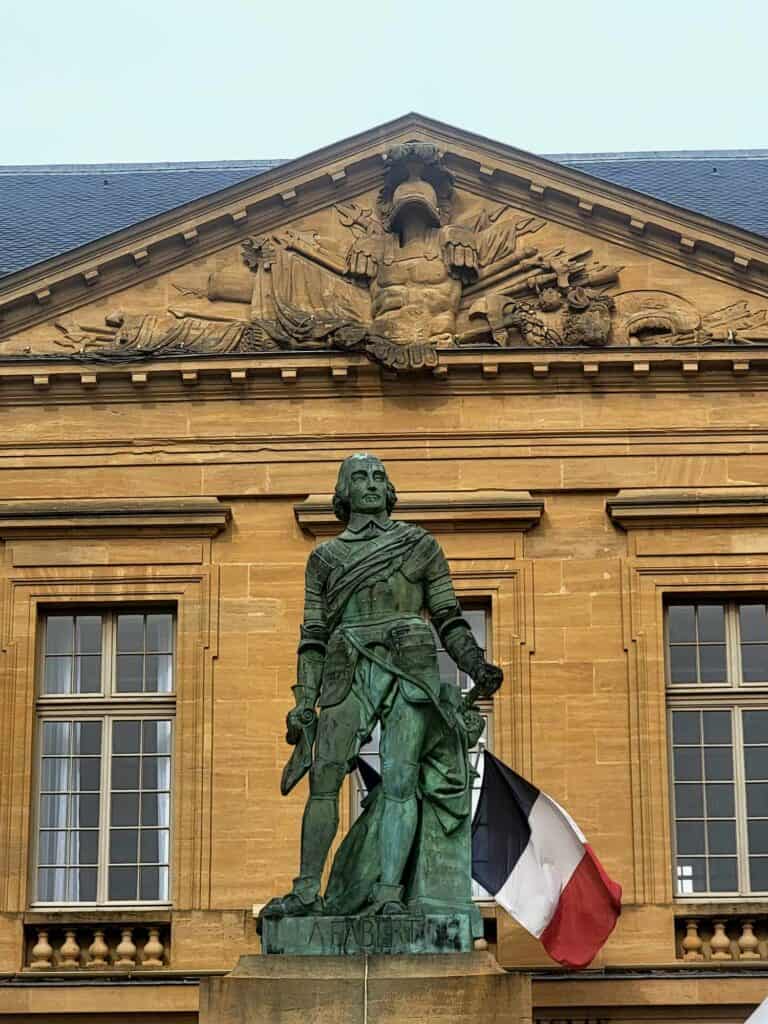
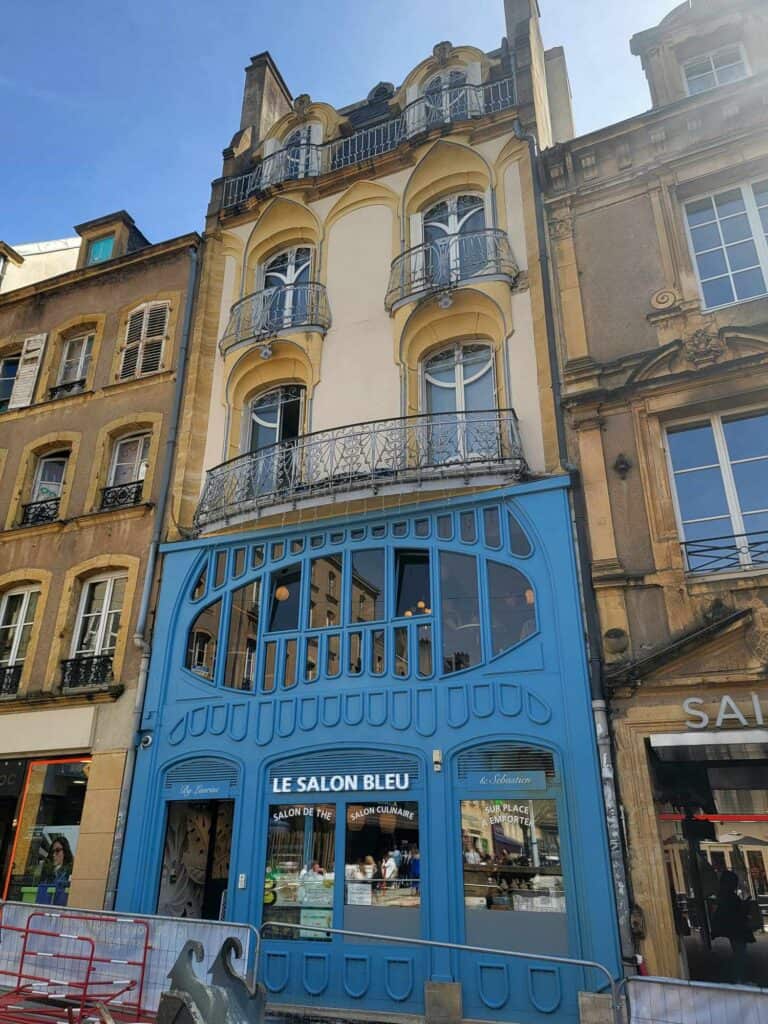
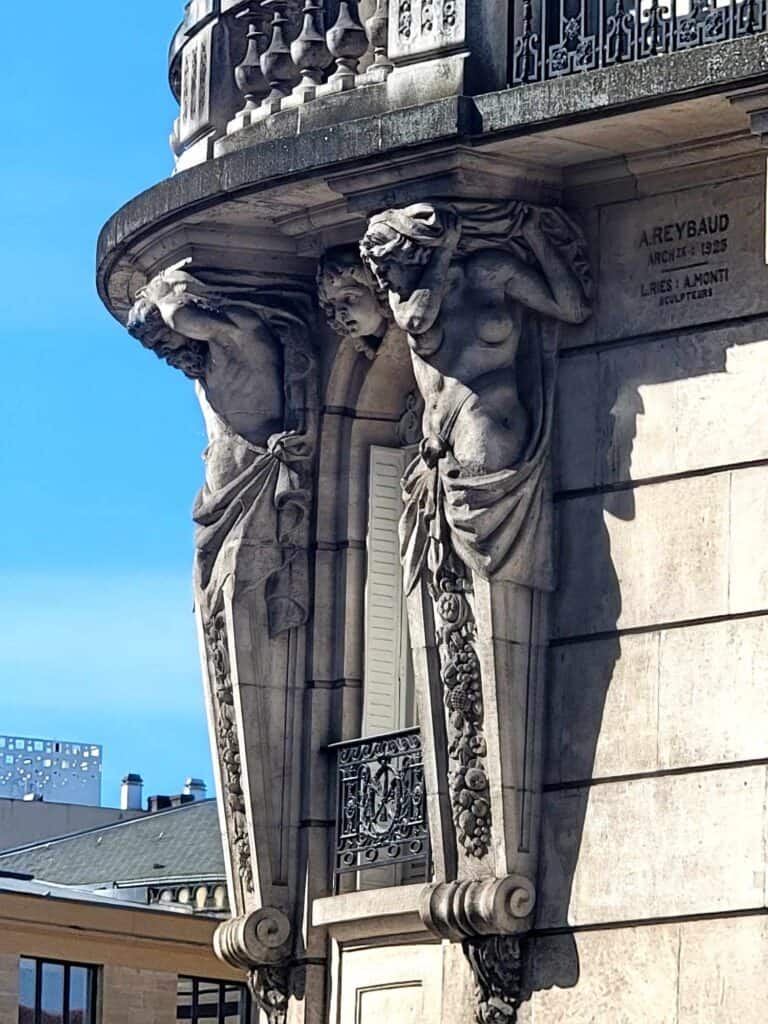
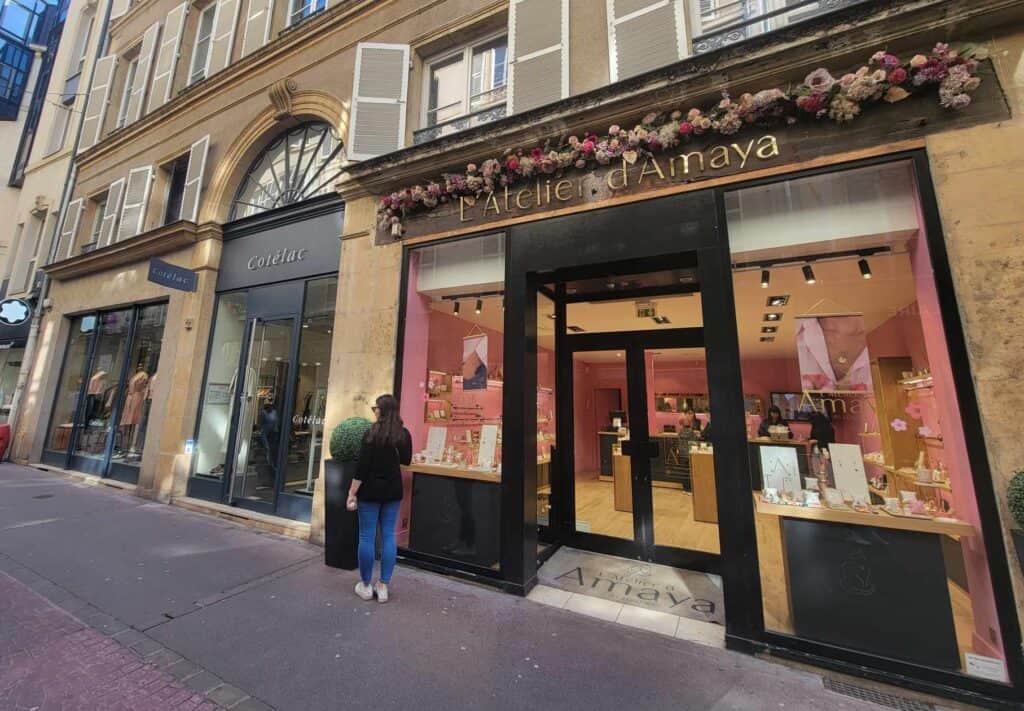
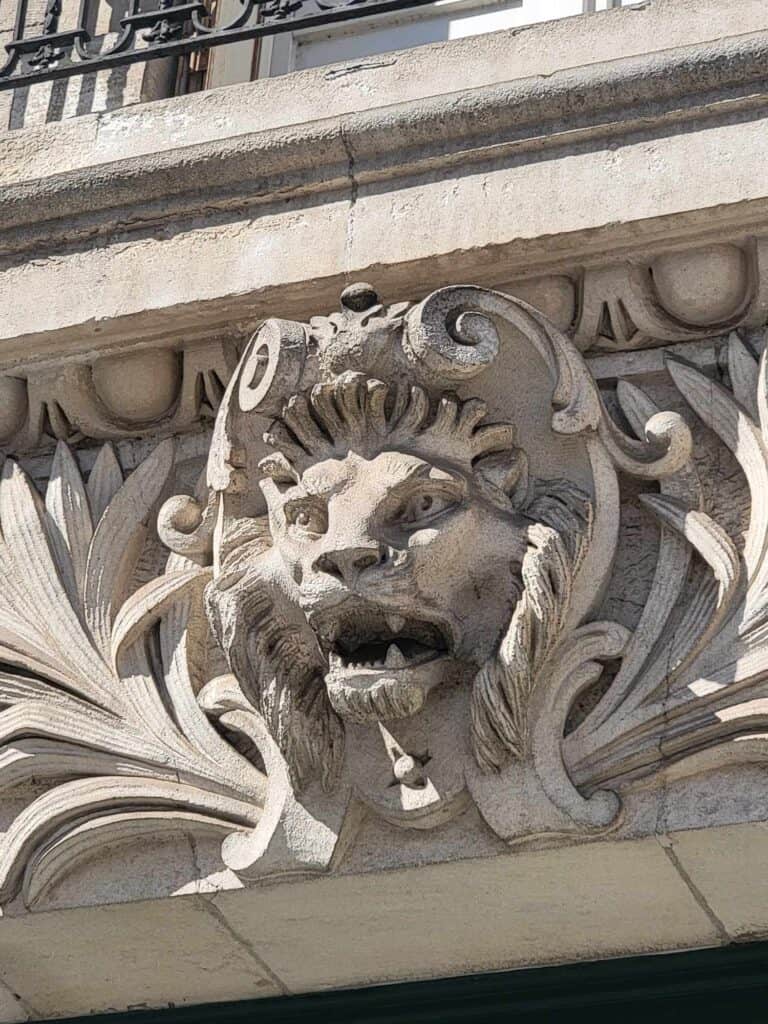
If you’re feeling splurgy and really want to dive into the history and discover Metz with your own personal guide for the entire day (with optional excursions to Verdun, Luxembourg, or Alsace) you should definitely check this out 👇
🏰 Full Day Private Historical Tour of Metz, the City Where Dragons Lived! 🐉
Where is Metz, and How Do You Get There?
You’ll find Metz in the far northeast of France near the German border in the Grand Est region which encompasses Lorraine, Alsace, the Ardennes, and Champagne. It’s located about midway between Paris and Frankfurt, so if you’re going from one to the other it’s a perfect place to stop and explore.
Metz is a very walkable city with most of the main attractions located centrally in the old section of the city, within its Medieval walls. Expect a vigorous sightseeing day to entail about 15,000 – 20,000 steps.
🚗 Metz by Car:
There are many parking garages located fairly close to the center of the city. The core of Metz is a giant pedestrian zone so you will have to walk a little bit, but parking right at or near the train station is a good bet.
- Paris: about 3 hours and 5 minutes from Metz by car
- Strasbourg: about 1 hour 35 minutes from Metz by car
- Luxembourg: about 43 minutes from Metz by car
- Frankfurt: about 2 hours 16 minutes from Metz by car
- Kaiserslautern: 1 hour 20 minutes from Metz by car
🚈 Metz by Train (fastest times):
The train station is stunning, and conveniently located right near all the things to see in Metz covered in this article.
- About 1.5 hour direct train from Paris (Gare l’Est)
- About 1.5 hour direct train from Strasbourg
- About 58 minutes direct train from Luxembourg
- About 3.5 hours from Frankfurt with a change in Forbach
- About 2 hours from Kaiserslautern with a change in Forbach
✈️ Metz by Plane
There are many nearby airports, and a variety of ways to get from them to Metz. If you aren’t using a rental car, here’s a great website that details some good airport options and how to get to Metz via public transportation.
Where to Eat in Metz
Fox Coffee Shop – 6 Rue Gambetta
If you’re looking for a very cool shabby-chic café with sumptuous maximalism on the inside and a gorgeous street corner overlooking the square on the outside, this is the spot. The pastries are incredible, the coffee bountiful, and the sandwiches are sublime.
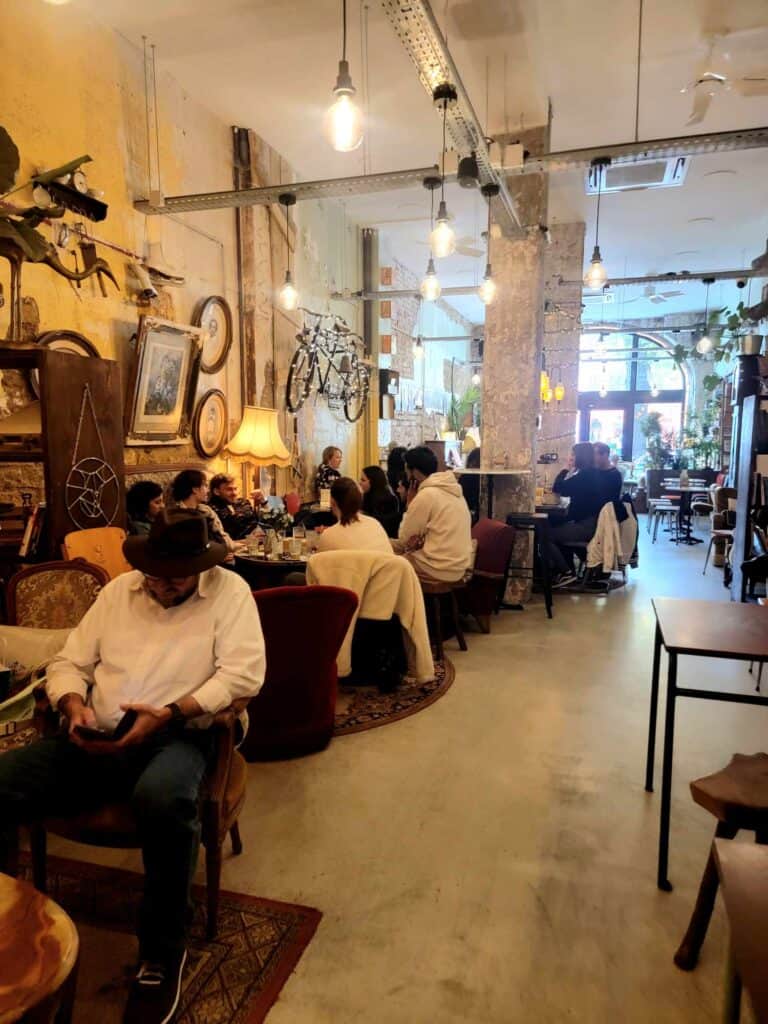
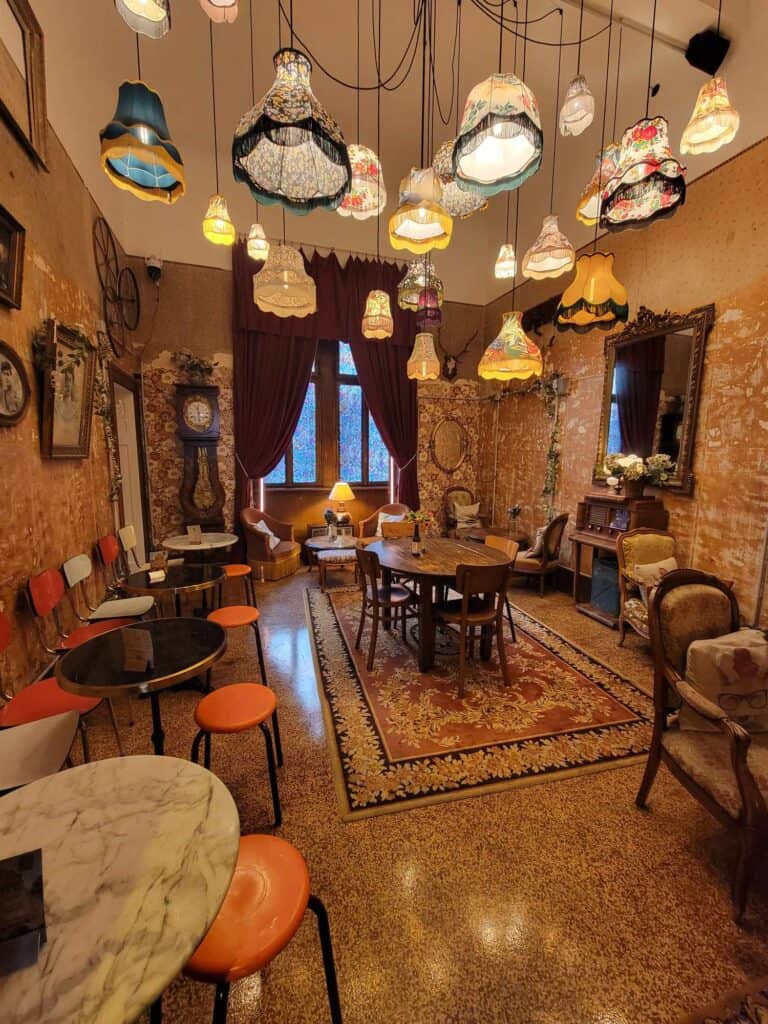
Plus, there’s a little secret salon in the back of the store by the bathrooms that looks like something out of a dream!
La Taverne – 38 Rue des Clercs
Metz is chock full of amazing bakeries, brasseries, cafés, and restaurants, but many restaurants don’t open until 7pm for dinner. So, we found this great spot, La Taverne, that serves at earlier hours and now it’s our go-to spot. My favorites are a traditional Alsacian tarte flambé (flammküchen in German) with bacon, onions, cream, and cheese. And they also have several choucroute (sauerkraut) dishes that are sublime. David keeps getting the filet de boef, and salted potatoes. We always leave full and happy!
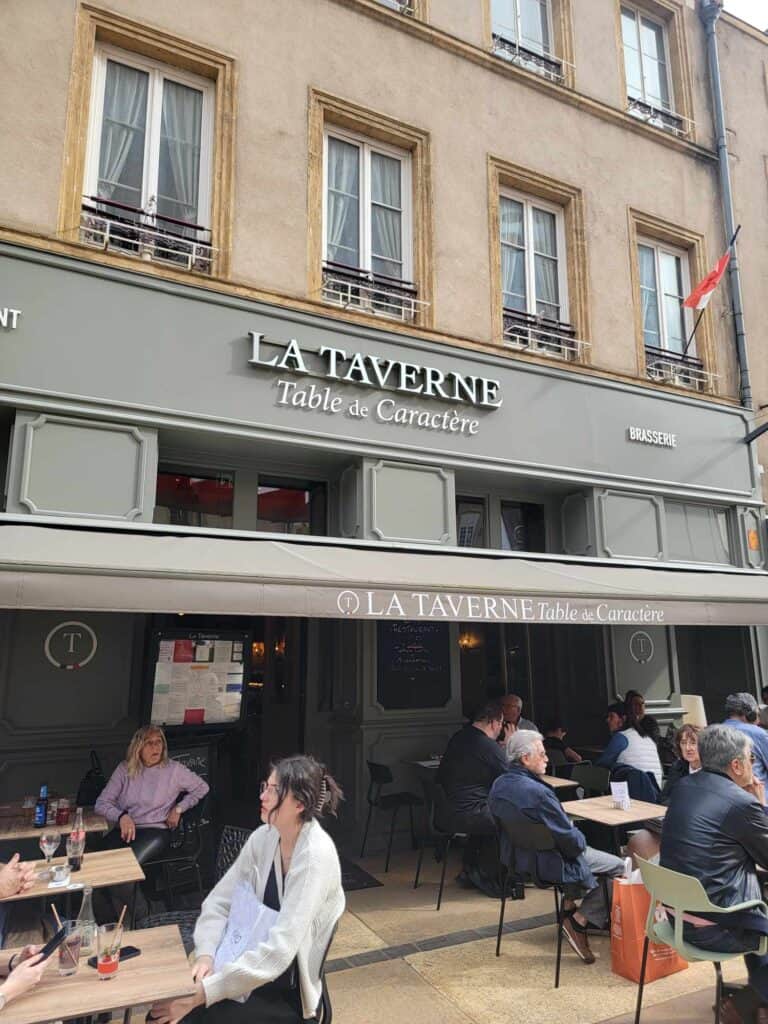
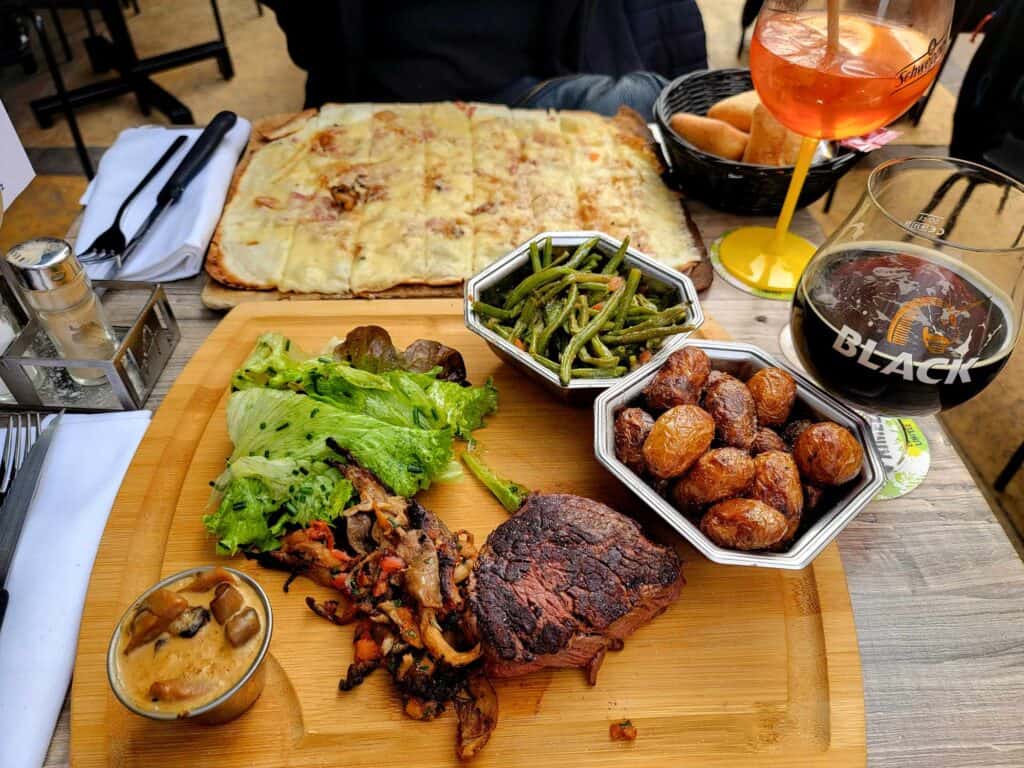
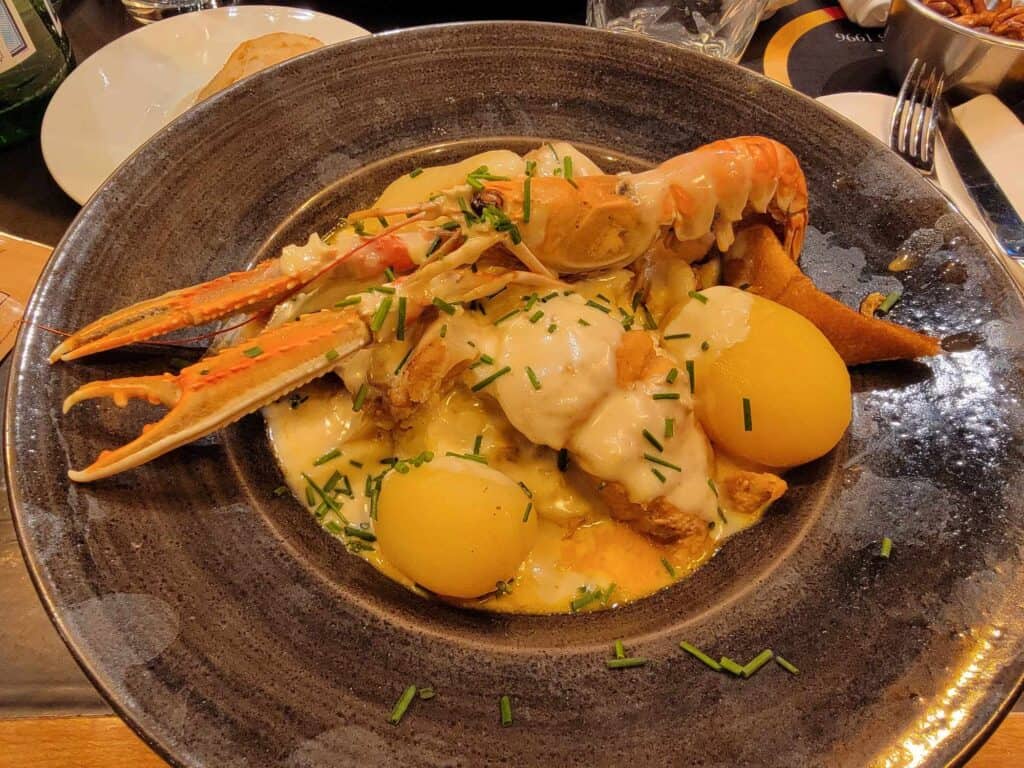
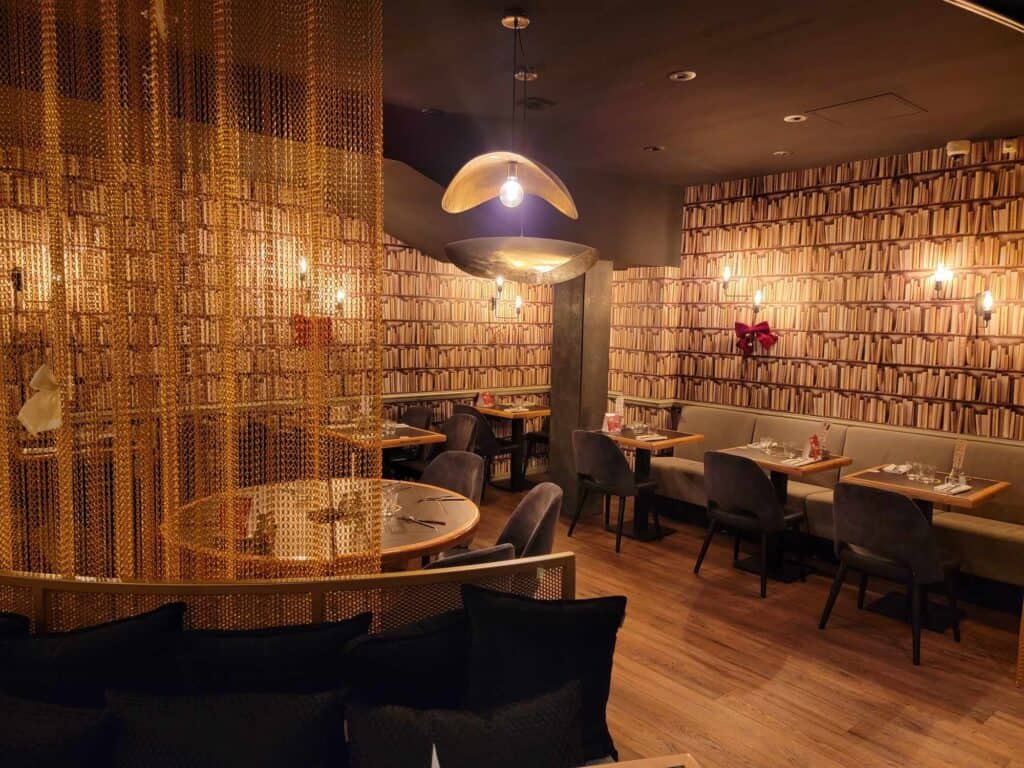
That’s Metz! If you are looking for an incredible French city that is still under the radar for most travelers, definitely check it out! I’m pretty sure you’ll fall in love like we have!
You may also like:
- Hack the Louvre! How to See the Louvre in 3 Hours
- Napoleon’s Tomb is Definitely Not What You’re Expecting
- The 12 Best Things to Do in Epernay France
- 10 Best Things to Do in Reims France
- What to Expect at the New Museum of Urban and Street Art in Bitche
- Is Versailles Worth It? Bastille Day in France
- The Sons of Bitche (France) and an Epic ‘Then and Now’ Photo Op!
- Haguenau Christmas Market – Best Guide to a Perfect Alsacian Christmas
More City Guides to Hidden Gems in Europe!
- 46 Best Things to Do in Rothenburg ob der Tauber
- One Day in Bamberg: Best Guide to Germany’s Medieval Beer Capital
- 21 Best Things to Do in Kaiserslautern Germany
- 28 Best Day Trips from Kaiserslautern: Your Ultimate Guide
- 11 Best Things to Do in Trier, Germany
- One Day in Aachen? Discover the Treasure!
- 11 Best Things to Do in Marburg, Germany’s Fairytale Town
- The Perfect Weekend in Cologne, Germany
- The 12 Best Things to Do in Epernay France
- 10 Best Things to Do in Reims France
- Ostuni the White City: Your Magical Gateway to Puglia
- The 7 Most Amazing Things to Do in Ravello Italy
- Is Pisa Worth Visiting? The Good and the Bad.
- Ravenna, Italy – Ultimate One-Day Itinerary!
- 20 Amazing Things to Do in Poznan, Poland!
- Altdorf Switzerland: Discover Where William Tell Shot the Legendary Apple
Be the first to know when we post new city guides and other helpful content about hidden gems in Europe!
